November 29 - December 5, 2020: Issue 476
Stokes Point To Taylor's Point: An Ideal Picnic, Camping & Bathing Place

'Panorama of Taylors Point' - 2, Pittwater, New South Wales circa 1917-1921, courtesy National Library of Australia, Image No.: nla.pic-vn6149430 - Part of Enemark collection of panoramic photographs [picture] [1917-1946] . Below: Sections from above panorama
%20Issue%20476.jpg?timestamp=1606579139549)
%20Issue%20476.jpg?timestamp=1606579182528)
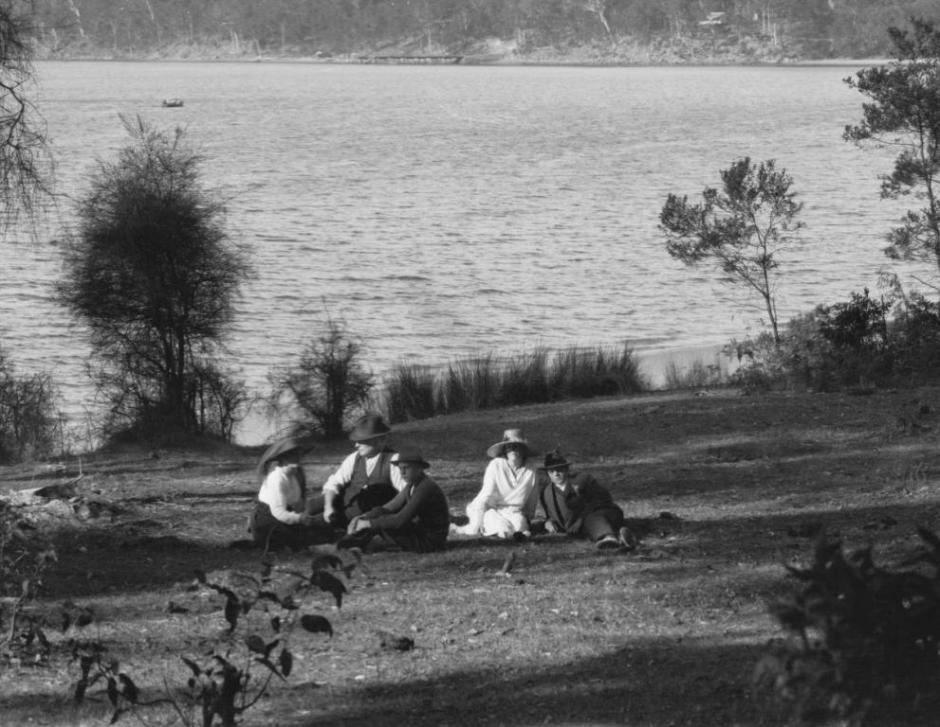
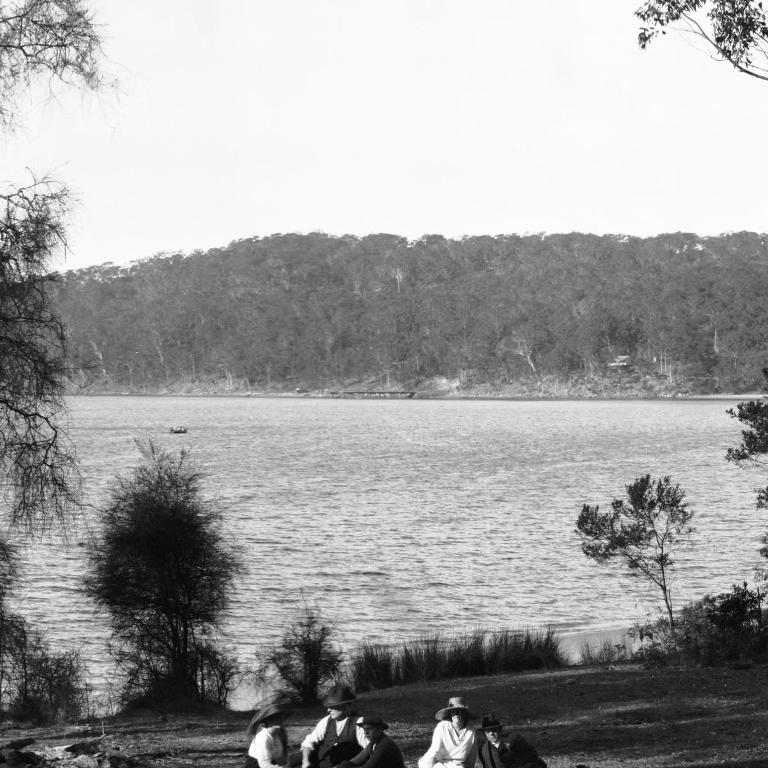
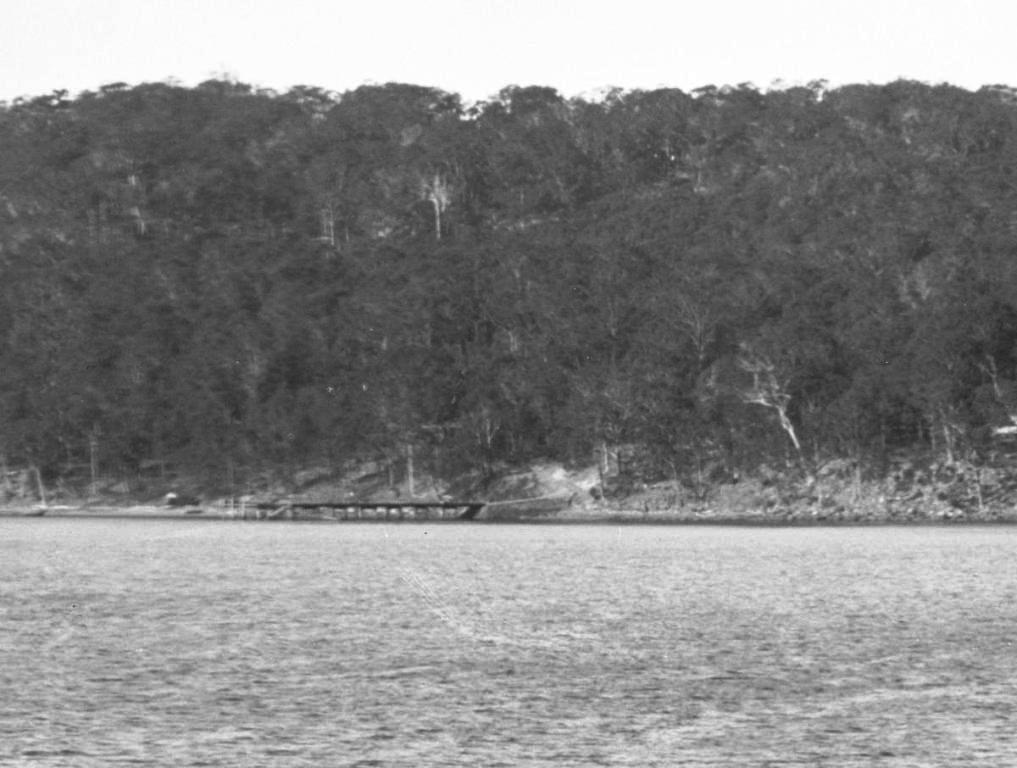
There's some great news from Council this week that announces the Taylor Point Baths works to replace the decking and netting for the swimming enclosure have been completed. The news brings into sharp relief how long the beach coves on the Pittwater estuary from Stokes Point to Taylor's Point have been a place for people to enjoy.
Although mostly inaccessible until the first land subdivisions necessitated the first roads being built to those blocks of land, once they were installed, and holiday homes and campers accessing the beach areas with tents and children in tow, and some living permanently in these places, the presence of sharks in the estuary meant residents requested a safe area or 'baths' to swim in.
ROAD CONSTRUCTION. Tenders are invited for the Clearing and Forming of about 25 Chains of Roads between Taylor's Point and Clareville, Pittwater, Shire of Warringah. TENDERS CLOSE on WEDNESDAY, 21st instant. No tender necessarily accepted. Plans and Specifications may be inspected at the office of Arthur Rickard and Co., Ltd.. Rickard House.64 Pitt-street. Sydney. Tenders to be addressed; Surveyor, Box 2524, G. P.O., Sydney. Advertising. (1923, March 17). The Sydney Morning Herald(NSW : 1842 - 1954), p. 12. Retrieved from http://nla.gov.au/nla.news-article16062331
Warringah Shire Council records show that at a letter was forwarded from the Avalon Beach and Progress Association in February 1933 was 'resubmitting a request for a pile and netting baths to be placed alongside Clareville wharf', however at a Meeting held on the 10th of June 1935, the President Stated he proposed to direct the Engineer to furnish an estimate for the construction of baths alongside Taylors Point wharf, the residents being prepared to contribute towards the cost.
At a Meeting held on the 6th of February 1940, the Taylor's Point Protective Assoc., were stating the Association is prepared to provide £7.10.0-towards the cost of erecting hand-rails and a platform around the baths at Taylor's Point. To which Council Resolved, - That £15, as estimated by the Engineer, be voted for the work, provided the Association contributes £7.10.0.
This would be the first version of the 2020 edition of the Taylors' Point Baths with a platform running alongside the enclosure.
By August 1947 the baths needed repairs.
The waters off Taylor's Point have been popular since at least the 1930's was shown when Taylor's Point resident Roger Wickins found a 1934 beer bottle in during his usual clean ups of the area when doing his daily snorkelling. It was one of several old beer bottles Mr. Wickens has taken back out of the estuary.
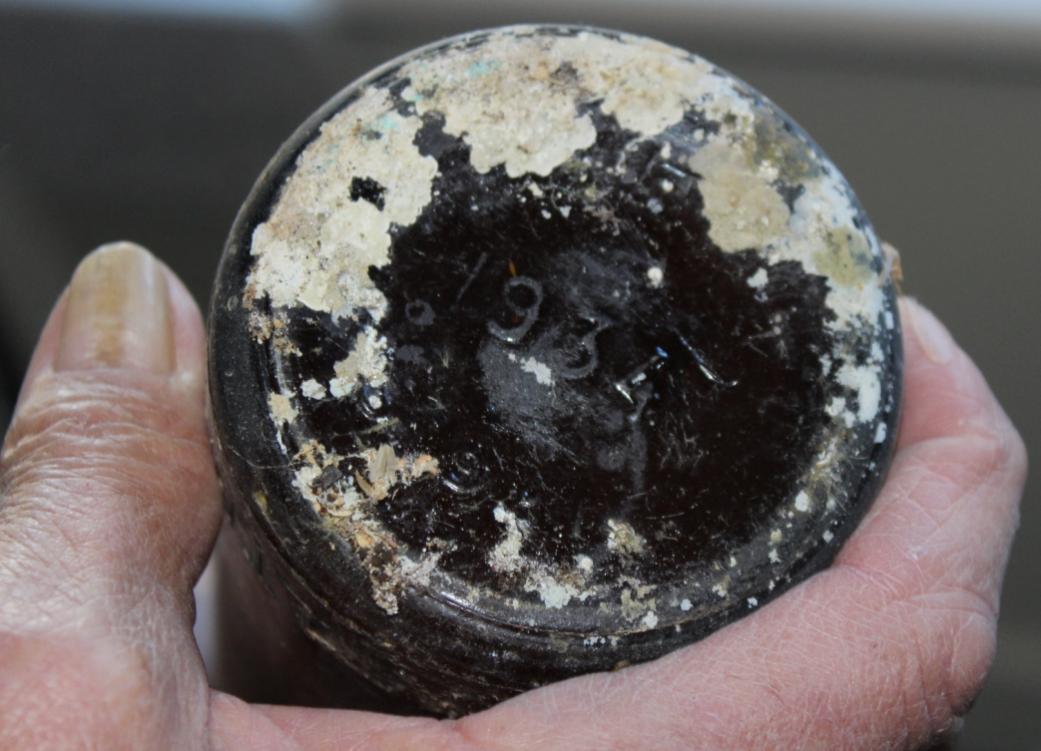
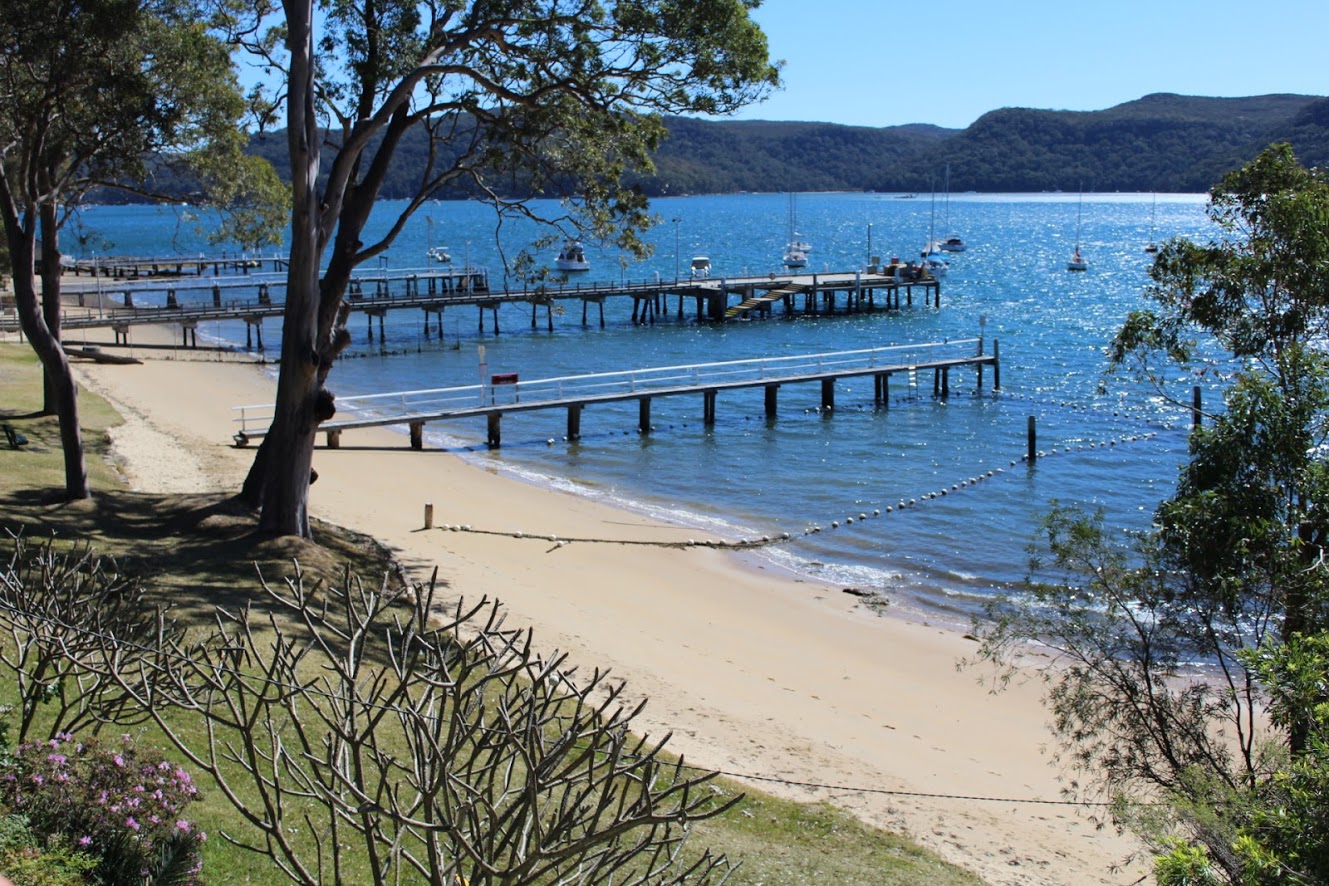
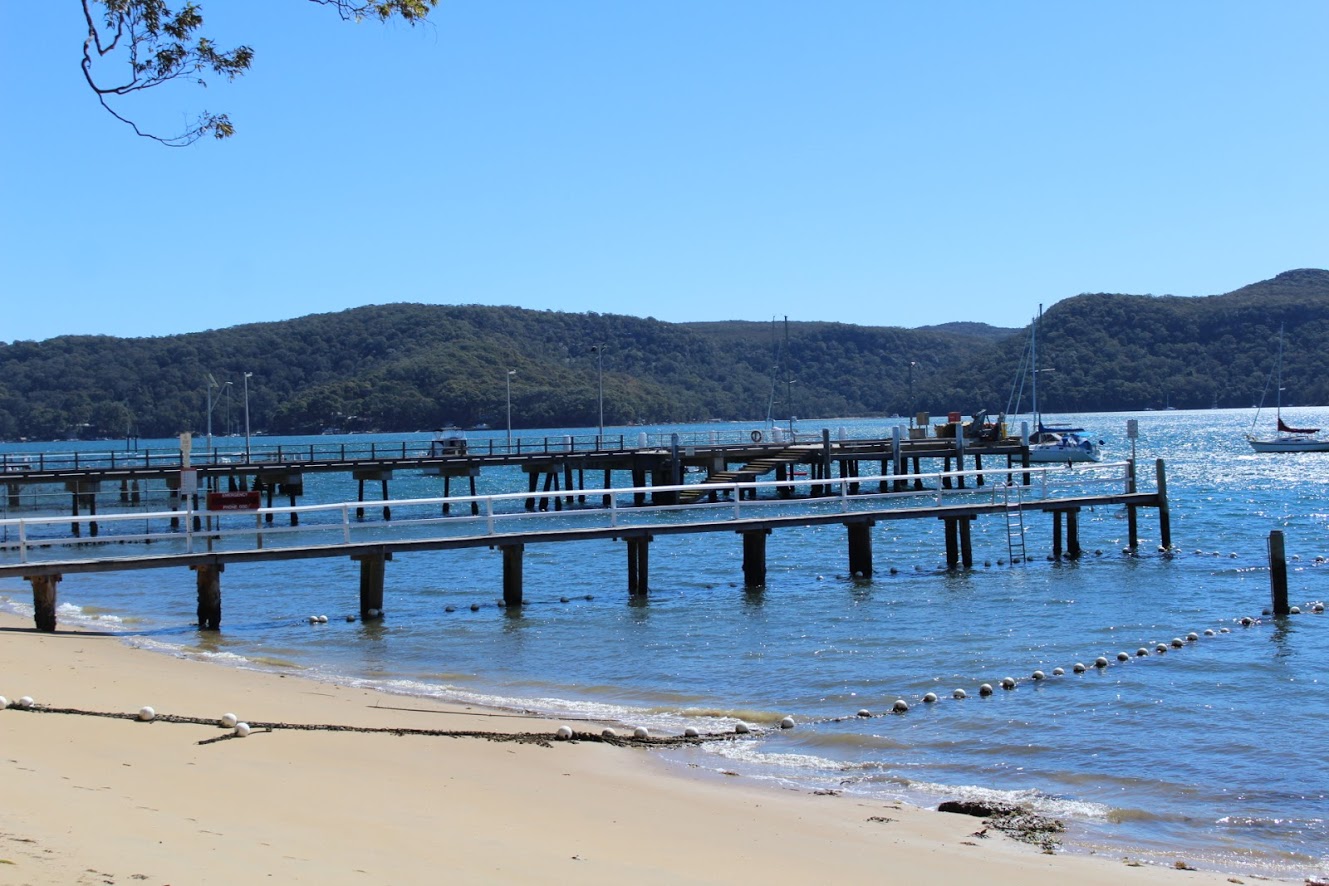
The green reserves alongside Taylor's Point were not the only place people enjoyed and enjoy still, with many coming to the beach coves between the two 'points' to camp, just as they did further north, at Sand Point, Palm Beach - somewhere flat enough to pitch a tent and with close by access to calmer waters became so popular that residents were asking council in January 1930 to install lavatory facilities of some kind at Taylors Point Reserve and Clareville.
%20-%20Copy.jpg?timestamp=1587191100767)
The Council needed to find a way to try and limit the amount of campers who would raise canvas along every shore and on blocks of land they had bought for future homes or weekenders. A few insights from the pages of the past provides a shift from wanting more people in the area, to having campers everywhere during the 1930's Depression, when being able to pitch a tent and catch a fish meant the difference between dignity and food for your children or embarrassed disgrace, homelessness and hungry mouths, and a cash-poor council trying to find ways to fund employment works, to caution during WWII when those on the coast were 'coast watchers' looking out for invaders, to a post-WWII scarcity of building materials for all the newlyweds and living in a tent or shed/garage until some could be procured as supply eventually caught up with rationing.
With the roads accompanying subdivisions, and more people buying a car, parking also became a problem in these places. By 1939 a petition from Paradise Beach residents was asking council to erect 'no parking' signs as visitors would just leave their automobiles anywhere and many parked across residents driveways.
At Newport village, King - street, leads out to Saltpan along a fairly good track, which opens out views of Pittwater, and will eventually run round the waterfront to Clareville Beach and be one of the most popular parts of the run to Palm Beach. NOW, one must return to Newport and pass on to Avalon before Clareville Beach may be reached, but no one with an eye for beautiful surroundings should miss this branch-off — Clareville Beach, with its shady gums over grassy lawns right on the whitest of sandy beaches, crescent shaped, and edged by the clearest of saltwater. It is an ideal holiday camping spot, and a haven of delight for the kiddies. There is a good road out to Careel Bay and along its southern shore, which branches off the Clareville road just as it reaches the ridge above the beach. This makes a lovely motor run for a mile or two through the trees, with glimpses of Pittwater on the left. C S Harnett Picturesque By-Paths. (1926, December 8). Sydney Mail (NSW : 1912 - 1938), p. 55. Retrieved from http://nla.gov.au/nla.news-article166521695
FEE CHARGED.
Tents on Private Property.
Property owners and persons who camped near the many beaches in the Warringah Shire during the Christmas holidays have protested against the action of the Warringah Shire Council in levying a camping fee of 5/ for every tent erected on private property.
Campers were surprised when officers of the council asked them to pay the camping fee. Their attention was drawn to notices signed by tile shire clerk (Mr. R. G. Jamieson) stat-ing that "any person erecting a tent or camp on his own land or on any other private land without first making application and obtaining permission from the council to do so, will be prosecuted." The notice added that the fee for the erection of each tent was 5/, which must be paid on application. There was an addendum, "Fee for one night only, 2/6." Receipts were issued in each case where the fee was paid.
Several meetings of protest were held by campers A meeting held at Avalon beach on Monday night passed a resolution record-ing a "strong protest against the charge levied as a building permit on tents," and appointed a deputation to wait on tile president of the Warringah Shire Council.
Mr. A. J. Small (vice-president and past president of the Parks and Playgrounds Asso-ciation) said yesterday that it was astounding that the council should have the audacity to collect camping fees from persons camped on private property. In his opinion, the charge was an interference with the liberty of the people.
Councillor Sheppard said last night that the council was within its rights In levying the fee, which was really a building fee. The council had power to levy the fee under Clause 85 of Ordinance 71, which read: "A person, shall not erect a tent unless upon application made for the purpose he obtains the approval of the council or of a representative of the council authorised to grant such approval."
Councillor Sheppard said the council, in deciding to levy the fee, had taken the view that the campers should contribute towards the cost of cleaning up the areas used as camp sites after the holidays. This work had been a heavy charge on the council's finances in previous years, The fee charged was nominal and should not cause resentment. The 5/ fee was charged for those camping on private property. Those camping on public reserves were charged a larger fee.
He added that the council had decided to exempt Boy Scouts from the fee. By error some Scouts had been charged the fee, but these amounts would be refunded. FEE CHARGED. (1932, December 29). The Sydney Morning Herald (NSW : 1842 - 1954), p. 8. Retrieved from http://nla.gov.au/nla.news-article16941707
POINTS FROM LETTERS. "BLITZ" ON CAMPERS.
As a frequent visitor to Clareville on Pittwater, I am interested to notice that the local council is trying to prevent the use of this delightful spot as a camping area. For some inexplicable reason this august body is harassing campers and property holders in every direction. Surely it should realise that there is a war on, and any "blitzing" to be done should be directed at the Empire's enemy, instead of respectable British citizens. Neutral Bay. W H GHENT. POINTS FROM LETTERS. (1941, July 11). The Sydney Morning Herald (NSW : 1842 - 1954), p. 3. Retrieved from http://nla.gov.au/nla.news-article17752637
One item found in council records show two tents pitched on Paradise Beach in December 1940, that had been there for at least two weeks, were going to get a visit by council officers with a 'move along' order.
The current Paradise Beach Baths evolved from an, as yet, unidentified source. Council records show that a Mr. J.A. Mackinnon has written to Councillors (letter dated 29/5/1947), stating he has received a letter from a property owner at Paradise Beach, Avalon, requesting a donation towards the cost of swimming baths recently constructed at a cost of £650, that a subdivision plan shows the present location for a proposed public swimming enclosure, and that it is the general impression that Council decided to carry out the construction of the baths as a benefit to local ratepayers and visitors, and requesting clarification of the position. Council replied that the Council did not build these baths and was not consulted the matter.
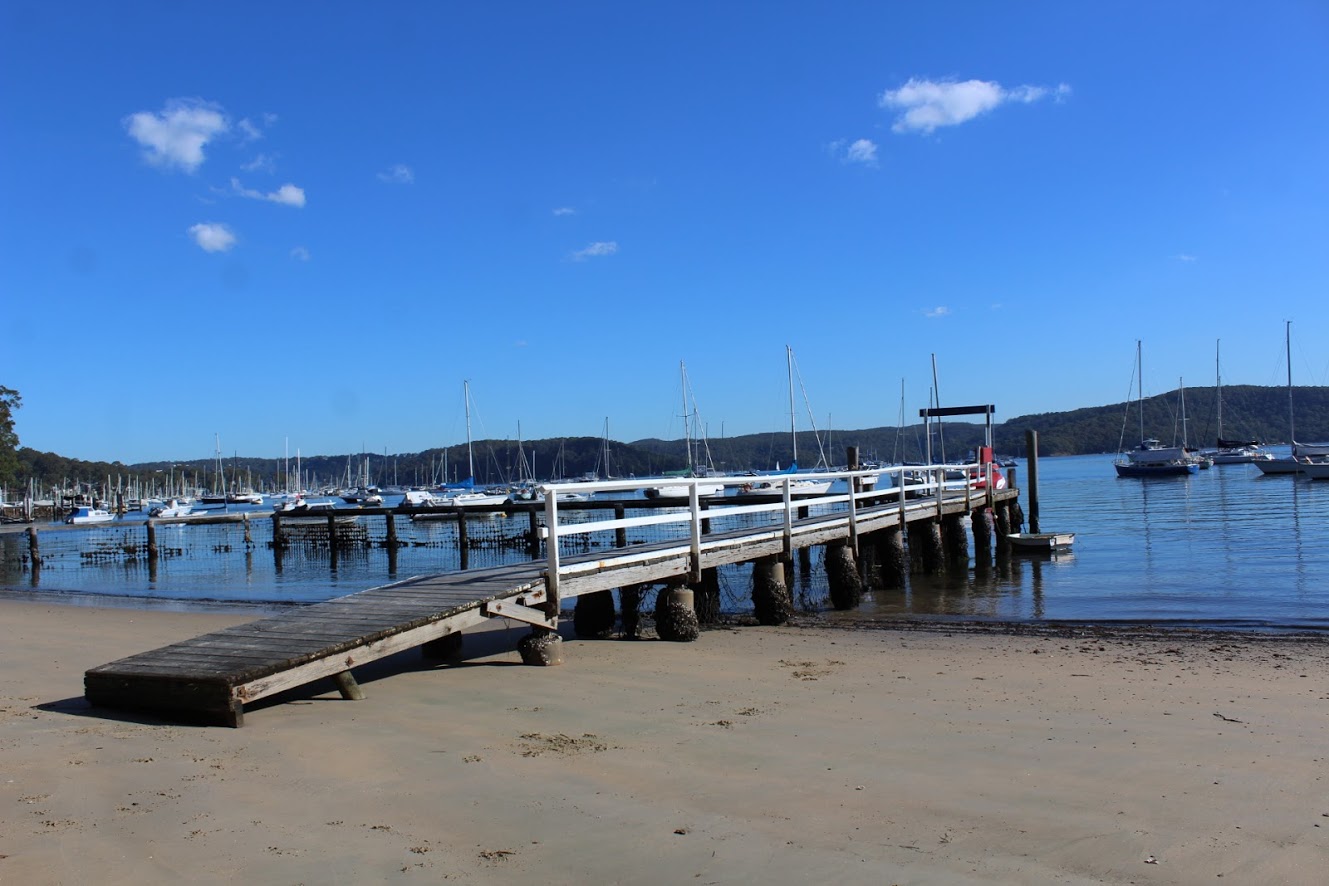
Paradise Beach Baths - AJG photo
August 1947 also shows that there are still some problems for access in and out to the Stokes Point to Taylor's Point as one Meeting shows, under 'Questions; 'Will Council approach the Education Department and the Traffic Department in an endeavour to provide transport for the children who attend Newport Public School and live at Paradise Beach, Taylor's Point and Clareville, as apparently there was some arrangement between the Education Department and a local Taxi Company for some weeks past which has not been fulfilled?'
The section from the Enemark panorama above shows the first version of the Clareville wharf on this side of the estuary, for which land was resumed by the state government in 1900. The Taylor's Point Wharf, alongside the baths, was a Warringah Shire Council project, from 1921:
SHIRE OF WARRINGAH. CONSTRUCTION OF JETTY. TENDERS, endorsed as such, will be received by the undersigned till noon on SATURDAY, 11th JUNE, for the Construction of jetty at Taylor's Point, Pittwater (near Clareville Wharf), …. Plan and specifications on view at Shire Office Brookvale. , R. G. JAMIESON, Shire Clerk. Advertising. (1921, May 27). The Sydney Morning Herald (NSW : 1842 - 1954), p. 1. Retrieved from http://nla.gov.au/nla.news-article15955609
However the Clareville Wharf constructed in 1900-1901 was preceded by another at Careel Bay, on the eastern side of Stokes Point. In the 2019 History page Pittwater Roads II: Where The Streets Have Your Name - Clareville, research showed that the original Careel Bay Wharf, built under orders from the Rev. J J Therry, was named 'Clareville Wharf' by him and this name extended to what we today call 'Avalon Beach' until the valley was renamed during the 1920s land subdivisions as 'Avalon'.
Clara is the Feminine form of the Late Latin name Clarus which meant "clear, bright". The name Clarus was borne by a few early saints, the feminine form popularised by the 13th-century Saint Clare of Assisi, a friend and follower of Saint Francis, who left her wealthy family to found the order of nuns known as the Poor Clares. As an English name it has been in use since the Middle Ages, originally in the form Clare, though the Latinate spelling Clara became more popular in the 19th century.
There is also the name 'Claraville', lots 8 and 9, (section 2) of portion 20, which Geoff Searl OAM, President of the Avalon Beach Historical society shed some light on in yet another thread of the name change from Long Beach and landowners names being applied to the coves/beaches, to Clareville as well as the pier Therry built at Careel Bay:
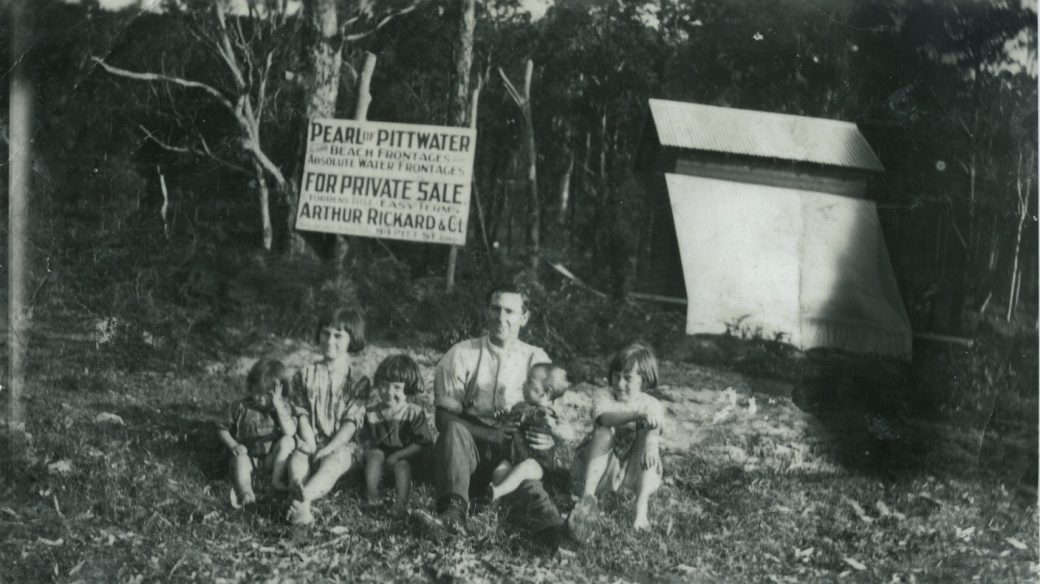
This photo taken in 1923 shows Alan Hay with his daughter Irene on his lap. Alan had married Clara Dorothy Collier in 1919. His other daughter Evelyn sits between the two Butcher children and her dad. The girl on the right was a friend from the dairy at Careel Bay. Note the lean-to against the early building which eventually became “Clare Villa”. Clara’s dad James purchased the first block of land on Clareville Beach. ABHS photo.
The Taylor of 'Taylor's Point was one of those transported to this country as a convict. Shelagh Champion OAM and George Champion OAM, in their Profiles of the Pioneers in Manly, Warringah and Pittwater (1996 - revised 2013), state:
John Taylor was sentenced to 7 years in London Court on 27 October 1790. He left Portsmouth on 27 March 1791 on the Albemarle with 282 male convicts, and arrived in Port Jackson on 13 October 1791.John Taylor was already residing at Broken Bay when his name appeared on a list of settlers to receive grants, dated 16 January 1816. He was probably the John Taylor, per the Albemarle, 1791, of Windsor, whose name was on a list dated 16 November 1816 of persons who came as convicts and who claimed they were free at the last General Muster, without supporting documentation. [AO Reel 6038; SZ759, p.283]John Taylor sold his grant, described as 50 acres, to Mary and Joseph Yeomans for one shilling on 10 January 1818. [LTO Book G No. 578]Meehan measured the 30 acre grant at Taylor’s Point on 15 April 1821.In October 1821 Barnard Williams announced that he had purchased John Taylor’s 30 acre farm at Pittwater. He cautioned “all Persons from trespassing on the said Farm, either by grazing their cattle thereon, or by carrying away the Timber therefrom, on pain of being prosecuted for the Offence.” [Sydney Gazette 27 Oct 1821]At the time of the 1822 General Muster, Charles Sommers and family were listed as residents “At J. Taylor, Broken Bay”.Surveyor General Mitchell in 1832 referred to him as Captain Taylor. His grant was officially confirmed on 6 July 1833. [LTO SN33/17]In spite of previous occupants and claimants, on 2 December 1840 John Taylor conveyed the 30 acre grant to Samuel Taylor for £90. [LTO Book U No. 117] On 20th November 1841 Samuel Taylor conveyed it to his father-in-law, Edward Kelly and his trustee, for £200, and on the same day Kelly made a settlement upon trust for his daughter, Mary Taylor. [LTO Book Y Nos.393, 396] The 1841 memorials note that a “Capital Messuage or Dwelling house has lately been erected.”The 1841 census shows that Charles Taylor and others were living in a wooden house at Taylor’s Point.Samuel’s wife, Mary Taylor died in 1842, aged 42.In 1865, the Empire made known many of the horrible crimes that had been committed in the Pittwater area, in an article entitled “The story of Mona Vale”. [Empire 20 Jan 1865] The experience of Samuel Taylor, then engaged in gold-mining in the Bathurst area, was recounted:“So far back as 1840, a Mr Samuel Taylor who had just arrived in the colony, with his wife and family, from England, purchased a farm at the locality in question, adjoining the Mona Vale farm. He immediately commenced to fence and improve it, and built a substantial house at a cost of £350; but Mrs Taylor dying in Sydney just as the house was finished, and before it was occupied, Mr Taylor, instead of going into farming pursuits himself, determined to let the place.He shortly afterwards secured an eligible tenant, who was about to take possession, when word was brought that the house and premises had been totally destroyed by fire. In a letter received a few days since from Mr Taylor, who now resides in the Bathurst district, that gentleman, in reference to the treatment which he experienced, says: ‘When it was known that I had let the place, those parties who had the benefit of my ground, and would of course lose the benefit of their cattle grazing there if the tenant had come, rendered the place useless to any one by maliciously firing the dwelling-house; and the fences having all been destroyed, the place has lain waste ever since; and Mr Farrell has had the use and benefit of my land for a number of years.’”David Foley was a police constable for Pittwater, and the following police court cases appear to be pertinent: David Foley vs John Farrell, threats, bound to keep the peace; John Coghlan vs John Farrell, threats, settled. [SMH 25 Feb 1843] John Coghlan was probably Taylor’s intending tenant. David Foley preferred a charge of “contemplated arson” against a young man named Farrell. [SMH 17 March 1843] John Farrell’s eldest son Daniel was committed for trial on “attempt to commit arson” but allowed bail. [SMH 22 March 1843] Further information on this case has not yet been found.Samuel Taylor died at North Sydney on 30 September 1893, his parents being John and Alice Taylor. The land at Taylor’s Point remained in the family until a certificate of title was issued to George Inglis Hudson in 1925. The grant was found to measure 36 acres; it was subsequently subdivided.
On the western perimeter of the valley of Avalon runs what was originally called 'Long Beach' and now is known as Clareville, sometimes spelled 'Clairville' and 'Claraville" in earlier records and Taylors Point, sometimes spelt 'Tailors'. When our area was still more bush and bush tracks than sealed roads the water was the smooth way to get around. Claraville's wharf was the first of these water access structures at Clareville:
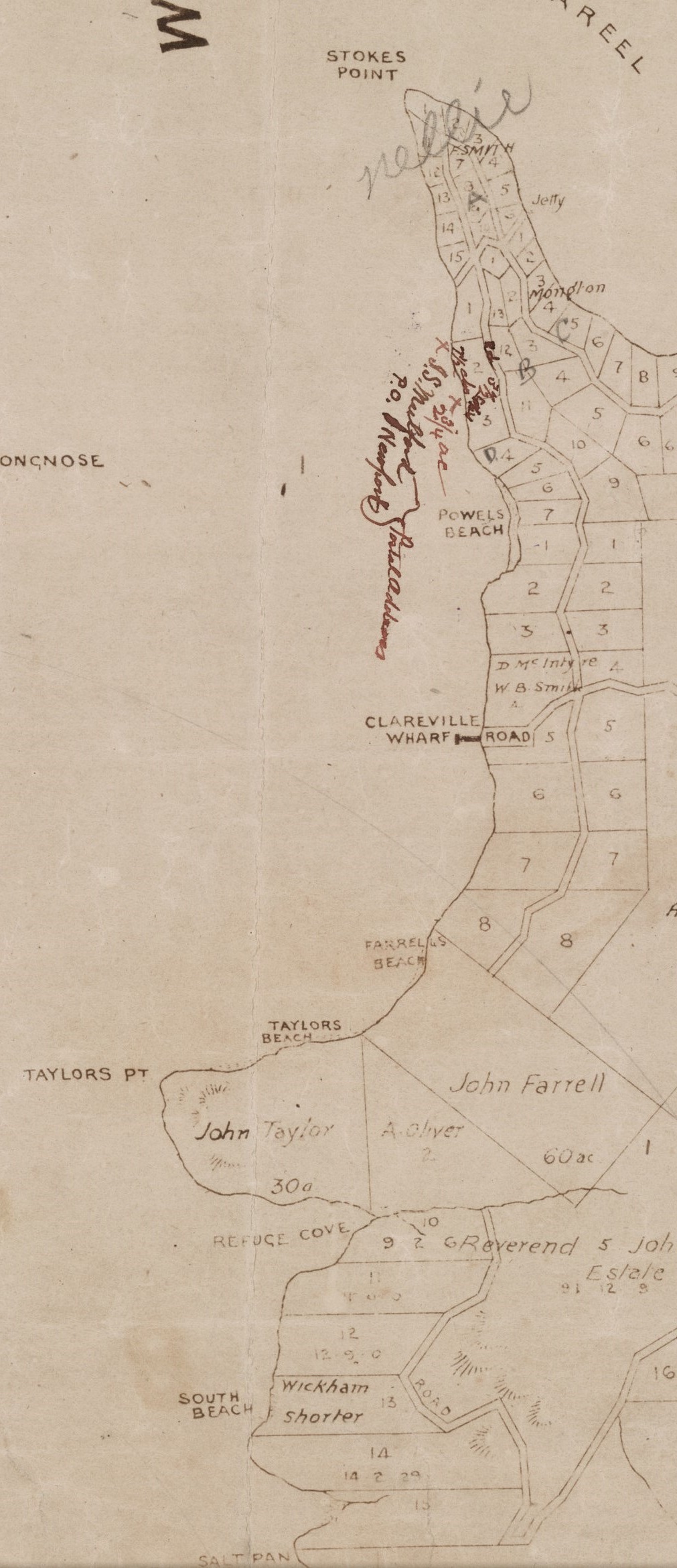
Sections from: Plan of Bay View and Pittwater district - No boundaries shown, circa 1900- 1901, Item No.: c053460078, courtesy State Library of NSW. Showing 'Powel's Beach', 'Clareville Wharf', 'Farrell's Beach' and 'Taylor's Beach'.
PITTWATER ESTATE. TWO VERY CHOICE BLOCKS, being LOTS III. and IV. of the NORTH DIVISION known as KRETCHMANN'S FARM. containing a total area of 103 acres 2 roods 20 perches, two sides of which are fenced with a two-rail fence. THE HOMESTEAD consists of two slab cottages, roofed with Iron, one containing 4 rooms and the other 2 rooms besides which there are various sheds for cattle, pigs, poultry, &c. There are also two paddocks, one of 6 and the other of 8 acres, newly fenced with a 6-barbed wire fence, and cleared ready for cultivation. There is a plentiful supply of water on the property, while the land has a frontage to the main road of 1873 foot by a great depth to the waters of Broken Bay, to which it has also a large frontage. Fine views of the Hawkesbury River and the ocean, at same time well sheltered from adverse winds. The tramway on the Military-road is expected to pass through the farm, and it is only 10 minutes walk from Claraville Pier, Pittwater. Grand block for subdivision purposes. Advertising. (1886, January 11). The Sydney Morning Herald(NSW : 1842 - 1954), p. 12. Retrieved from http://nla.gov.au/nla.news-article28359687
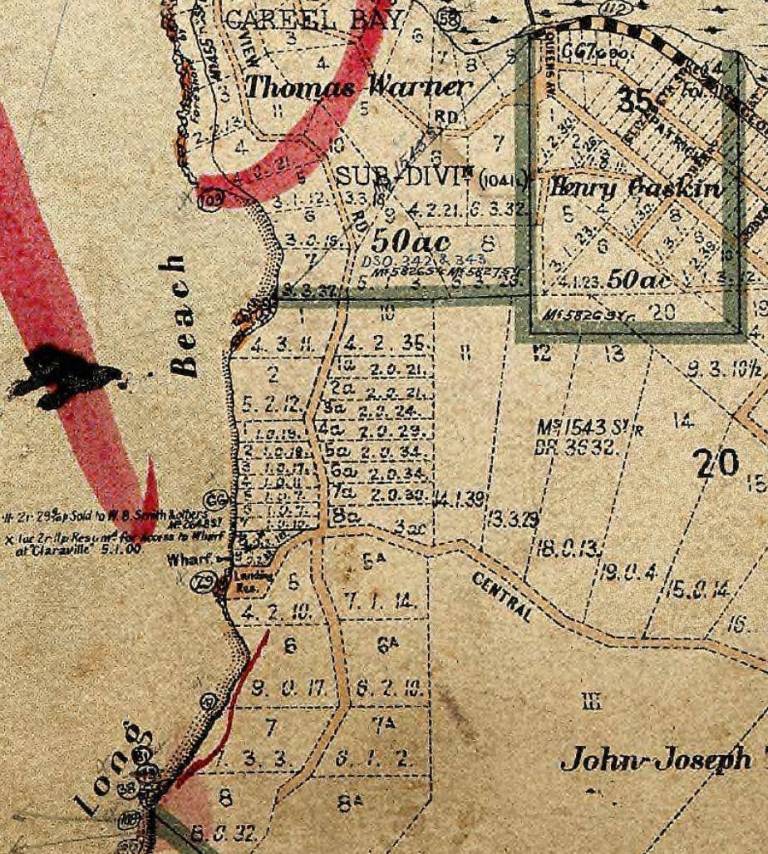
Pre- 1905 Land Titles Map - Showing 'Claraville' and 'Long Beach'. Courtesy Land Titles Office Historic records of NSW.
On 29 June 1885 Lix’s attorney sold the farm to Josef Kretschmann, Professor of Music, for £1162. A contract for sale to John Davison was transacted on 5 February 1886. [LTO Book 336 No. 603] On 18 May 1886 an order was made by the Chief Commissioner for Insolvent Estates, placing Kretschman’s estate under sequestration. The official assignee of the estate, Lancelot Threlkeld Lloyd, finally conveyed the estate to John Davison on 20 February 1888. [LTO Book 381 No. 150] Davison paid £816 1s 6d to Lloyd, and £30 to Simeon Frankel. from - Profiles of the Pioneers in Manly, Warringah and Pittwater (1996 revised 2013), Shelagh Champion, OAM, B.A.(Lib.Sc.)and George Champion, OAM, Dip.Ed.Admin.
As the area grew more popular and shifted from being a rural food bowl to a recreation and holiday area, gaining access to these beautiful bays and tucked away beaches for those wanting to buy their own block of paradise was provided through landing people at wharves and jetties. Many of these, where they did not exist in a strong enough form to disembark hundreds, and sometimes thousands of visitors or 'excursionists' - had to be built.
As they were, landing areas were set aside and later became public reserves under the caretaking of Pittwater Council and maintained by volunteer Bushcare groups. Called the 'Old Wharf Reserve' it is almost a whole hectare of remnant bush:
Pittwater Council records listed: Area (ha): 0.72 Asset No: A12270
Wharf Remnant
Location: Adjacent to 28b Hudson Parade (Adjacent To and South of This wharf (remnant) is historically important as it is from the early 20th Century and was used by local fisherman. There is also a park near by named Old Wharf Reserve.
Historical Notes or Provenance:
Built as Clareville Public Wharf early in the 20th Century. Often known as 'Padden's Wharf' as local fisherman Bert Padden would offload his catch here. Park at top of hill is named Old Wharf Reserve.
A 1922 photograph shows the area from Stokes Point to Taylors Point devoid of wharves, ramps and swimming pools with the exception of the wharf at Clareville, the remains of which are in the cage beside the present Avalon Sailing Club. It was from this wharf that timber was sent to many ports in Australia during the early days of the Pittwater colony (Avalon Sailing Club, 2008). Rare early wharf remains, stone abutments and some timbers.
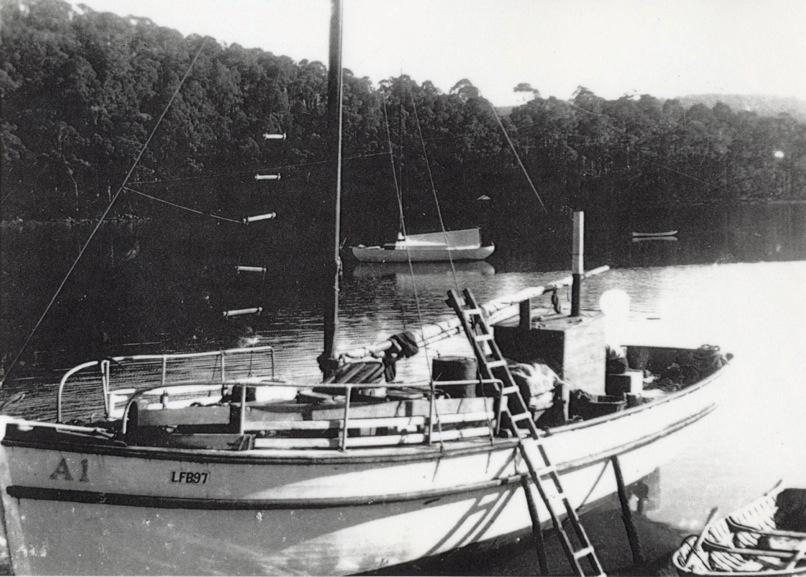
Bert Paddons fishing boat - courtesy Avalon Beach Historical Society
Shire of Warringah— Erection of Shed on and Repairs to, Clareville Wharf, Pittwater Bay. — August 6 — R. G. Jamieson, Shire Clerk. Clerk. Advertising. (1921, August 1). Construction and Local Government Journal (Sydney, NSW : 1913 - 1930), p. 3. Retrieved from http://nla.gov.au/nla.news-article108986478
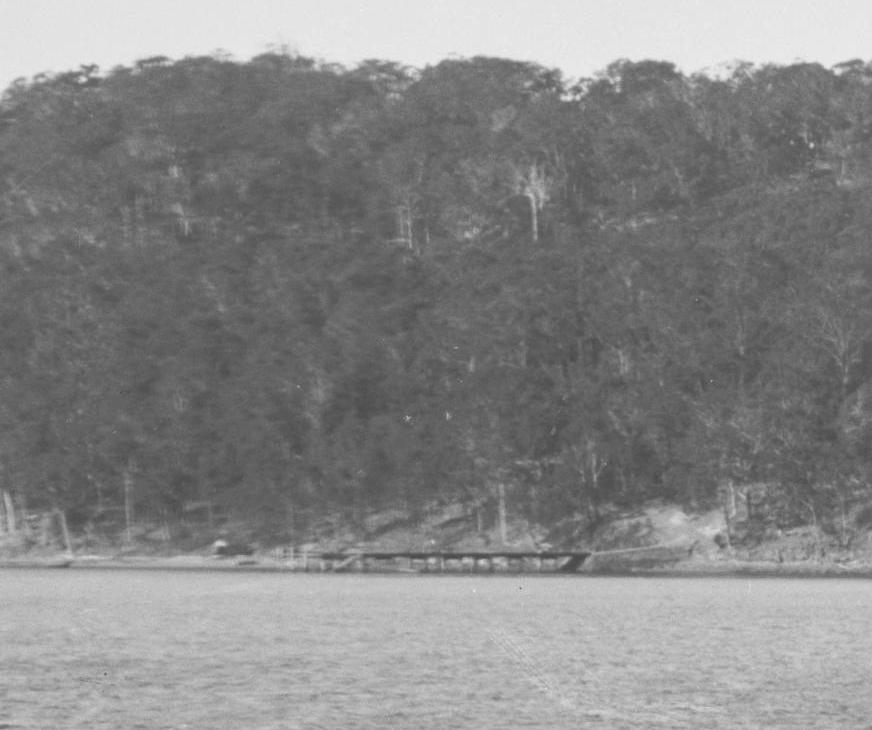
'Panorama of Taylors Point' - 2, Pittwater, New South Wales circa 1917-1921, courtesy National Library of Australia, Image No.: nla.pic-vn6149430 - Part of Enemark collection of panoramic photographs [picture] [1917-1946] - shows wharf prior to shed being built
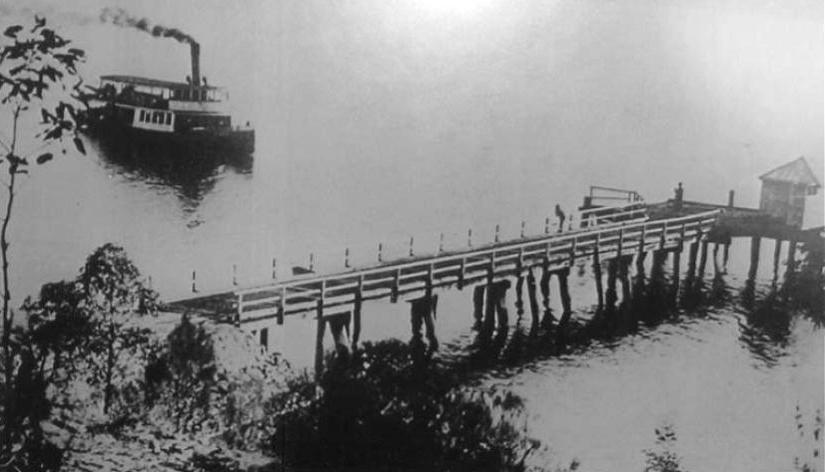
The SS Phoenix Steamer Approaching Clareville wharf, circa 1922
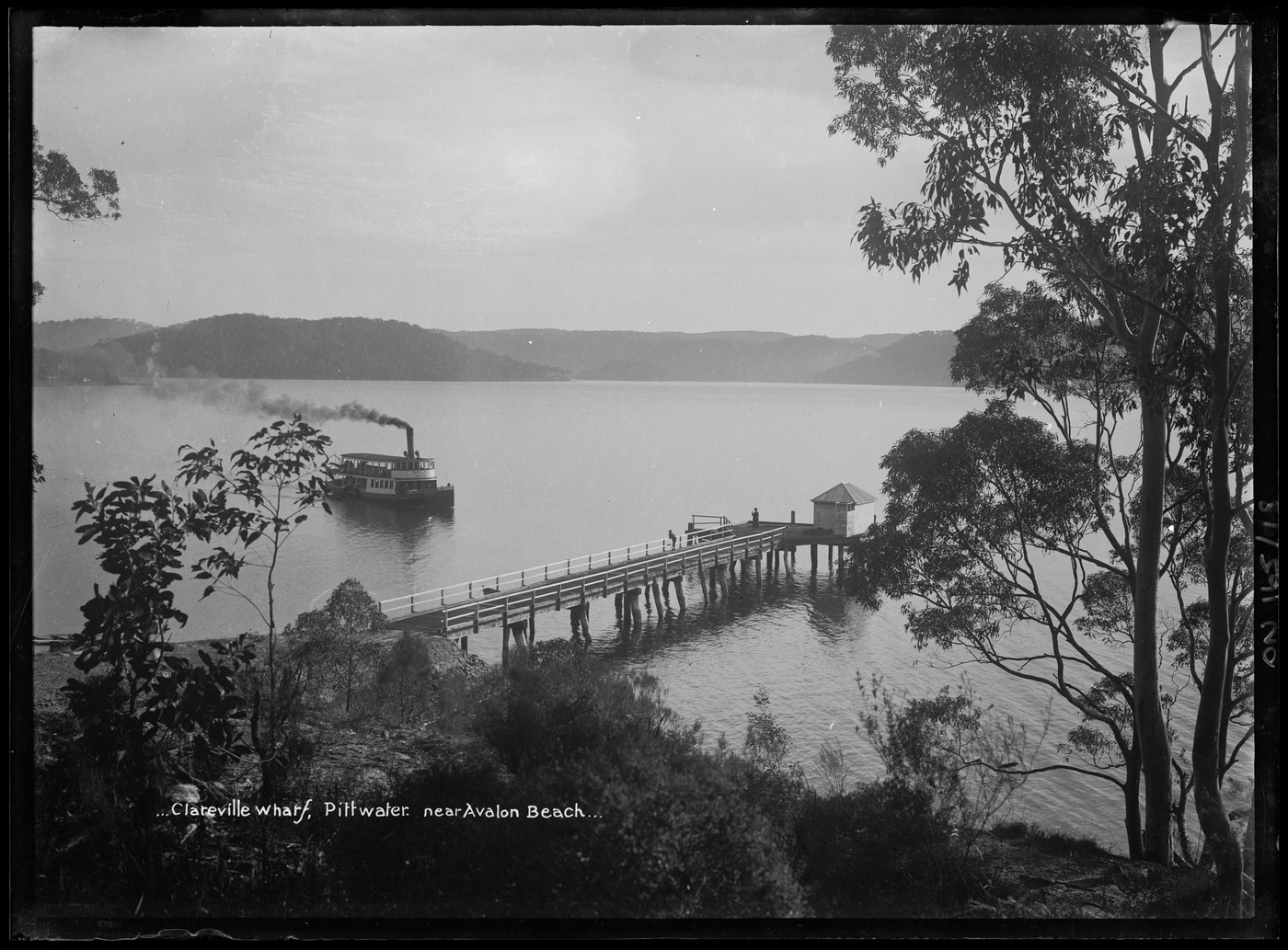
Clareville wharf Pittwater near Avalon Beach - Small steam passenger vessel coming in - photo by Rex Hazlewood, circa 1920-1929Image Courtesy The Mitchell Library, State Library of NSW, No.:c046220013h - S.S. Phoenix
Warringah Shire Council Meetings Minutes show the need for repairs came at a time when there was little or no m,oney to do so. The constant onsluaght of the elements, which requires repairs to all wharves on the Pittwater still, meant that when the Avalon Beach Progress Assoc. (17/9/29) Again - requesting that Clareville wharf be put in order and Council Resolved, ''The Engineer go into the matter of Wharves on a report for improvements on all the wharves of Pittwater - with a view to the inclusion of the work in a loan proposal, and he be empowered to obtain the services of a draughtsman if necessary for the preparation of plans.'' that a stock market crash and no money anywhere for anything would lead, by February 1935, to; 'Clareville Wharf: Cost of demolition of Clareville Wharf: Resolved, the expenditure of £99 on the demolition be confirmed'
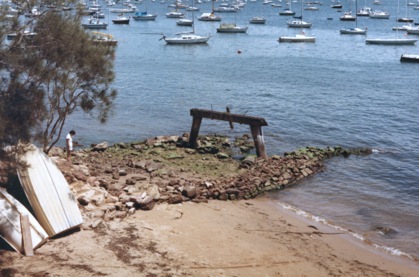
Above: Geoff Searl, President of Avalon Beach Historical Society with the remnants of Clareville wharf in 1983
Swimming, camping and picnicking weren't the only activities happening along the stretch between Stokes Point and Taylor's Point. Three of Australia's early successful rowing families are associated with the stretch of beach bays, the Green family, the Paddon family, and the Fox family.
Pittwater started early to add to the shipbuilding. Many sloops and vessels were built at this beautiful spot. Mr. Stokes built several. He gave his name to Stoke Point more often called Stripe Point, south of Careel Bay. A man called Bradbury is credited with having built the first boats at Careel Bay. George Green, father of the sculler, built and launched a vessel in 1855 on the east side of Clareville,between Stokes Point and Taylor's Point. It was on the stretch of water at the head of Pittwater that Green's son—Dick trained for the championships. MILESTONES IN EARLY COLONIAL PROGRESS. (1941, February 8). The Newcastle Sun (NSW : 1918 - 1954), p. 4. Retrieved from http://nla.gov.au/nla.news-article167440508
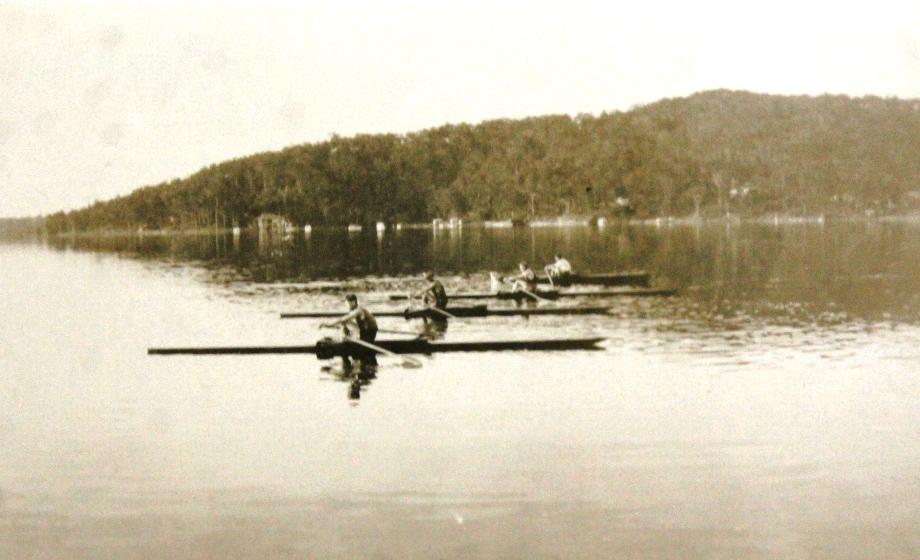
SCULLING. Clareville Picnic Races.
The Pittwater Aquatic Club will hold a regatta at Clareville on Monday next. The programme is -
Men’s Gladstone Skiff Handicap (1/2 m) - C Williams scratch J Toyer 2s B Paddon 5 F Kerr 7 F Elgood 8 E Towns 8 V Fox 10 C Wilson 13 H Robson 13 I Smith 14 H Towns, 18 J Smith 15 B King 17 A Fryer 18 B Hickson 20 J Hanlon 20 A Cobb 24 W Goodsell 24 F Wilson 25 O Rahmote 30 F Timbrell 30A Keys 30
Women’s Gladstone Skiff Handicap (1/2 m) –Misses J Gilroy scratch J Nilsen 12s Q Smith 13M Hickson 16 J Cocks 18 K Heselden 26 N Thurston 30 T Hall 34 D Hammond 3 D Pamplin 36 N Tickner SO
Men’s and Women’s Double Sculls (heavy boats) (1/2 m) -Miss M Marshall and B Paddon scratch Miss I Cocks and E Towns scratch Miss M Williamson and H Robson 3s Miss K Heselden and I Smith 7 Miss Q Smith and F Smith 8 Miss T Hill and F Elgood 9 Miss D Hammond and H Towns 11 Miss M Hickson and B Hickson Jun 12 Miss D Pamplin and G Towns 13 Miss I Hornery and B Shakelton 13 Miss N Tickner and A Fryer 15
Men's Best and Best Boat Handicap (1/2m) –C Williams scratch J Toyer 2s F Kerr 5 B Paddon 7 E Towns 7 F Elgood 7 V Fox in H Towns 14 J Hanlon 14 G Towns 15 N Fox 20
Men s Best and Best Handicap (2/4 m) -C Williams scratch J Toyer 3s F Kerr 7 E Towns 9 F Elgood 9 V Fox 14 H Towns 17 J Hanlon 18 G Towns 19 N Fox 30
Relay Race for Parramatta Cup (holders Pittwater) -Pittwater C Williams F Kerr (outriggers) B Hickson and A Fryer (Gladstone skiff) B Paddon V Fox F Smith C Wilson (heavy boats) Parramatta Team to be selected. The racing will start at 10 a m Speed boats will convey visitors from Bayview Newport and Palm Beach to Clareville. SCULLING. (1934, September 27). The Sydney Morning Herald (NSW : 1842 - 1954), p. 14. Retrieved from http://nla.gov.au/nla.news-article17133988
The work to maintain these areas is an ongoing job. As the lumber most suited for immersion as marine pilings, Australian turpentine, has become more and more expensive as the vast forests of where it once was are harvested but not replanted, the costs will rise further still.
This is just one lot of work overseen by local government though. Another that has become ongoing and shows in current community discussions around public pathways commenced as a means to access all places in Pittwater along greener quieter safer ways in the 1920's, as part of developer requirements, and the usurption of these public thoroughfares for private use, has been a constant battle too. This item from Warringah Shire Council records of the 1930's shows:
Mr A J Small 4/5/34, drawing attention to the fact that someone has enclosed within a fence a lane between Lots 21 Closing of and 22, Clareville Ocean Beach Estate, Avalon Beach, thereby preventing public access, requesting Council to take immediate steps to have the obstructions removed and the thoroughfare re-opened. Absolved, - That consideration be deferred until next meeting.
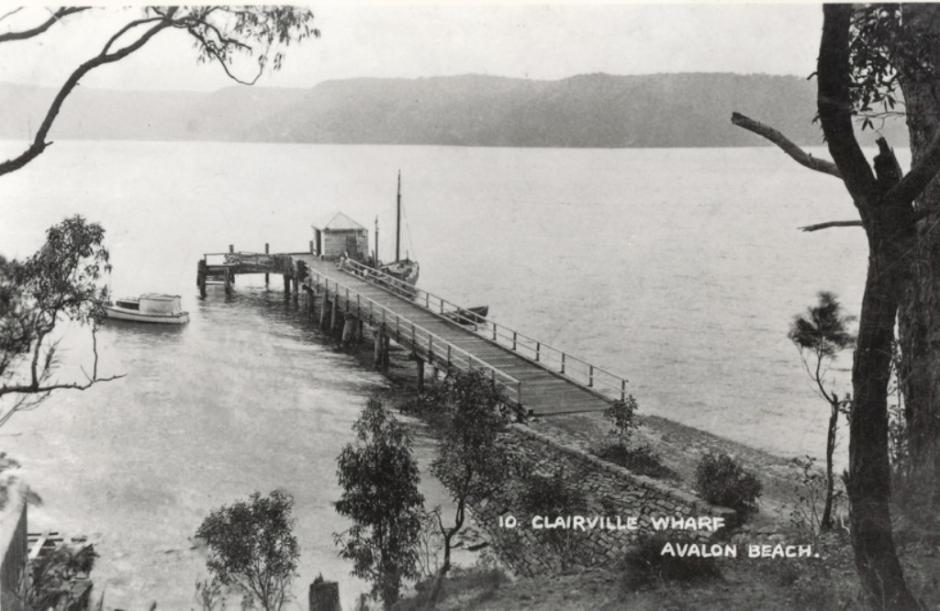
Clareville Wharf - spelt "Clairville" - picture courtesy Avalon Beach Historical Society
References And Extras
- TROVE - National Library of Australia
- Warringah Shire Council Minutes of Meetings Records - Warringah Library
TOMORROW'S SALES. Tomorrow being Anniversary Day, and a holiday, has been chosen for the sale of many subdivisions in many parts of the State. Investors have a fine bill of fare to select from in mountain, seaside ,and suburban estates. Messrs. Richardson and Wrench, Ltd., have two important sales in hand, at Balmoral and the Clairville Estate, which, faces Pittwater Harbor. … The Claireville Estate supplies the opportunity for those looking for cheaper blocks on an equally attractive beach. Messrs. Richardson and Wrench have made arrangements to cater for their clients at this sale, and motor-launches will meet the motor-cars from Narrabeen at Newport and Bay View and from the Hawkesbury River railway station on the day of sale. On the opposite side of this narrow neck of land, which is on the road to Barrenjoey, Messrs. Stanton and Son, Ltd., will, about the same time, cater for investors who desire to acquire blocks in the Careel Ocean Beach Estate, which is situated near the Hole in the Wall. This firm, too, will run free motor-launches to meet the down motor-cars and the train at Hawkesbury from Sydney. Both propositions have considerable future values, and, judging from inquiries which the auctioneers have received, there will be a good attendance of buyers for blocks in both estates. ACRES AND LOTS. (1914, January 25). Sunday Times(Sydney, NSW : 1895 - 1930), p. 4. Retrieved from http://nla.gov.au/nla.news-article120363861
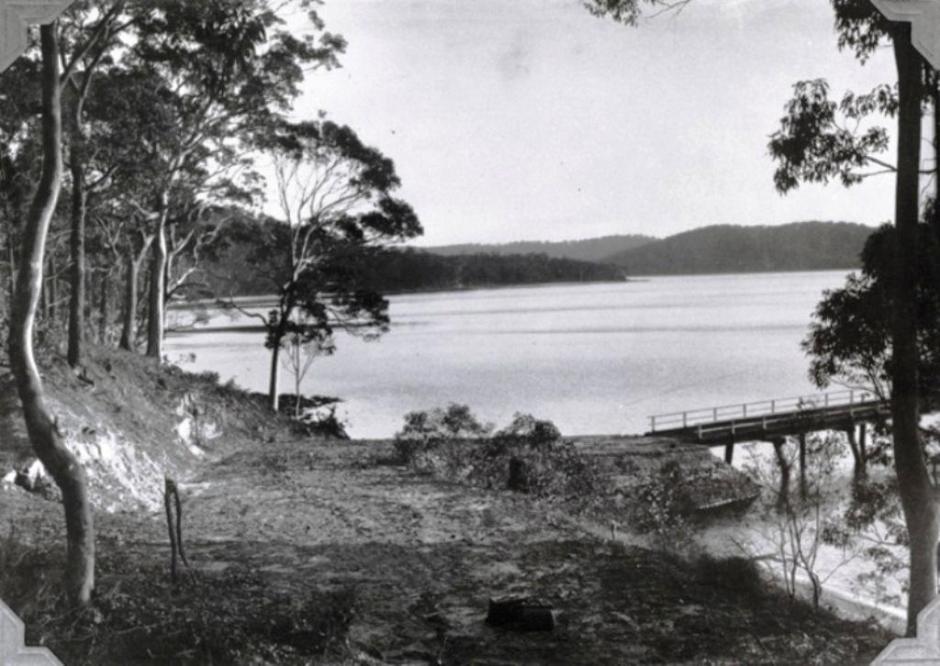
Taylors Point Jetty And Environs

'Panorama of Taylors Point with real estate sign advertising upcoming land subdivision', Pittwater, New South Wales, Circa 1917-1920, courtesy National Library of Australia., Image No.: nla.pic-vn6149436 - Part of Enemark collection of panoramic photographs [picture] [1917-1946]
Below: zoomed in sections from above panorama - which show the beach area to an old boatshed and jetty and the SS Erringhi coming up the Pittwater Estuary. You can explore many of these Enemark Panoramas in the National Library of Australia's Online collection - these all have a 'zoom' in feature where you can see the small details of Pittwater - our research indicates they were photographed between 1917 and 1921 - as the Clareville and Taylors Point wharf and jetty were built or replaced during this period - simply go to the NLA website and enter into the Search box 'Pittwater' and choose 'picture' under add limits dropdown box - click on the Panos that pop up and you will see a 'zoom' function - enter 1200x1200 and have an explore - wonderful stuff - visit here
This 'Taylors Point' sale sign is from 1921:
CALL FOR CONCESSION MOTOR AND LAUNCH TICKETS FOR THE SALE AT TAYLORS POINT. THE GEM OF PITTWATER
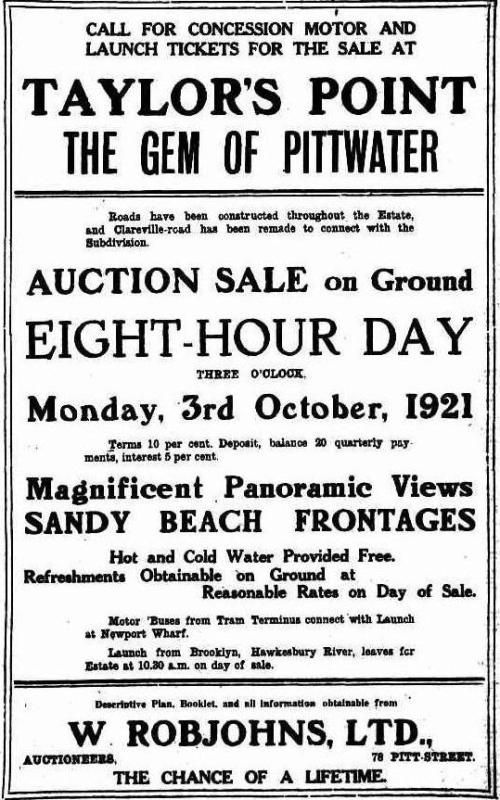
Roads have been constructed throughout the Estate, and Clareville-road has been remade to connect with the Subdivision. AUCTION SALE on Ground EIGHT-HOUR DAY THREE O'CLOCK, Monday, 3rd October, 1921. Terms 10 per cent. Deposit, balance 20 quarterly payments, interest 5 per cent. Magnificent Panoramic Views SANDY BEACH FRONTAGES. Hot and Cold Water Provided Free. Refreshments Obtainable on Ground at Reasonable Rates on Day of Sale. Motor 'Buses from Tram Terminus connect "with Launch at Newport Wharf. Launch from Brooklyn, Hawkesbury River, leaves for Estate at 10.30 a.m. on day of sale. Descriptive Plan. Booklet, and all information obtainable from W ROBJOHNS, LTD., AUCTIONEERS, 78 PITT-STREET. THE CHANCE OF A LIFETIME. Advertising. (1921, September 24). The Sydney Morning Herald (NSW : 1842 - 1954), p. 11. Retrieved fromhttp://nla.gov.au/nla.news-article15989853
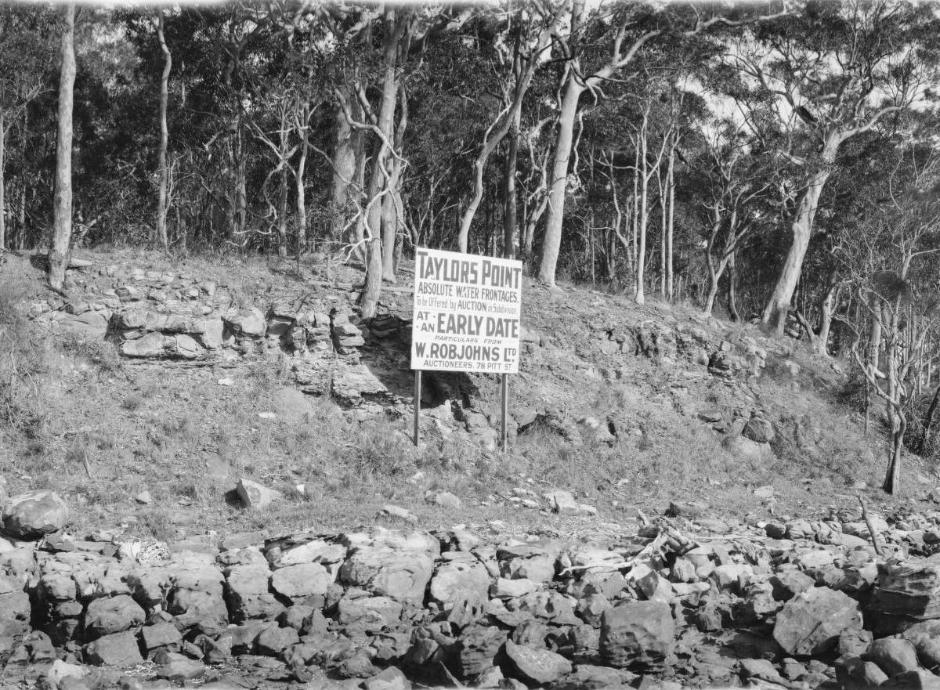
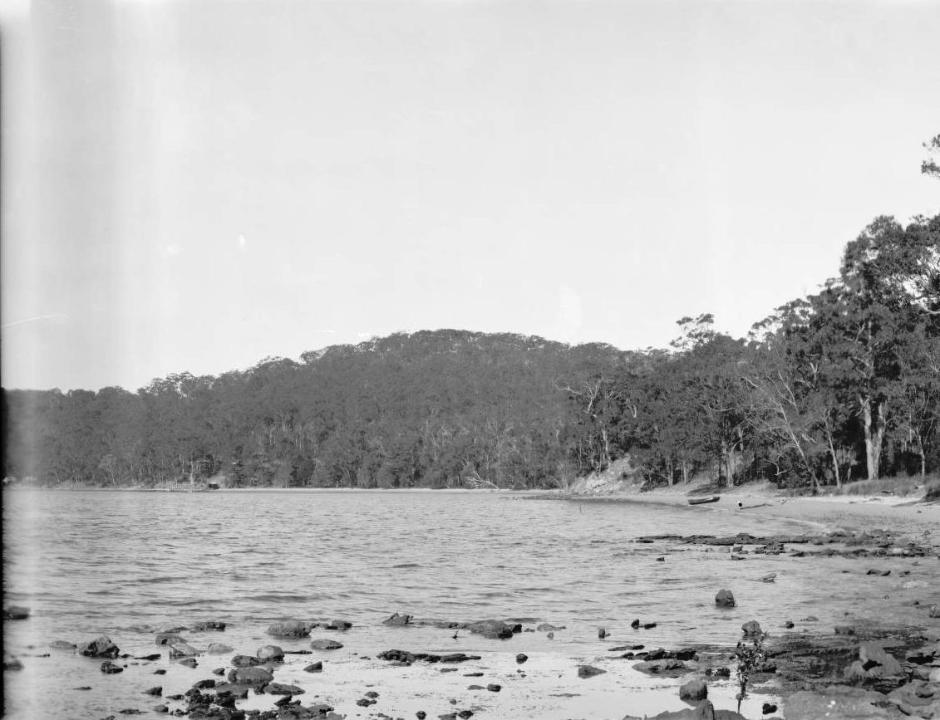
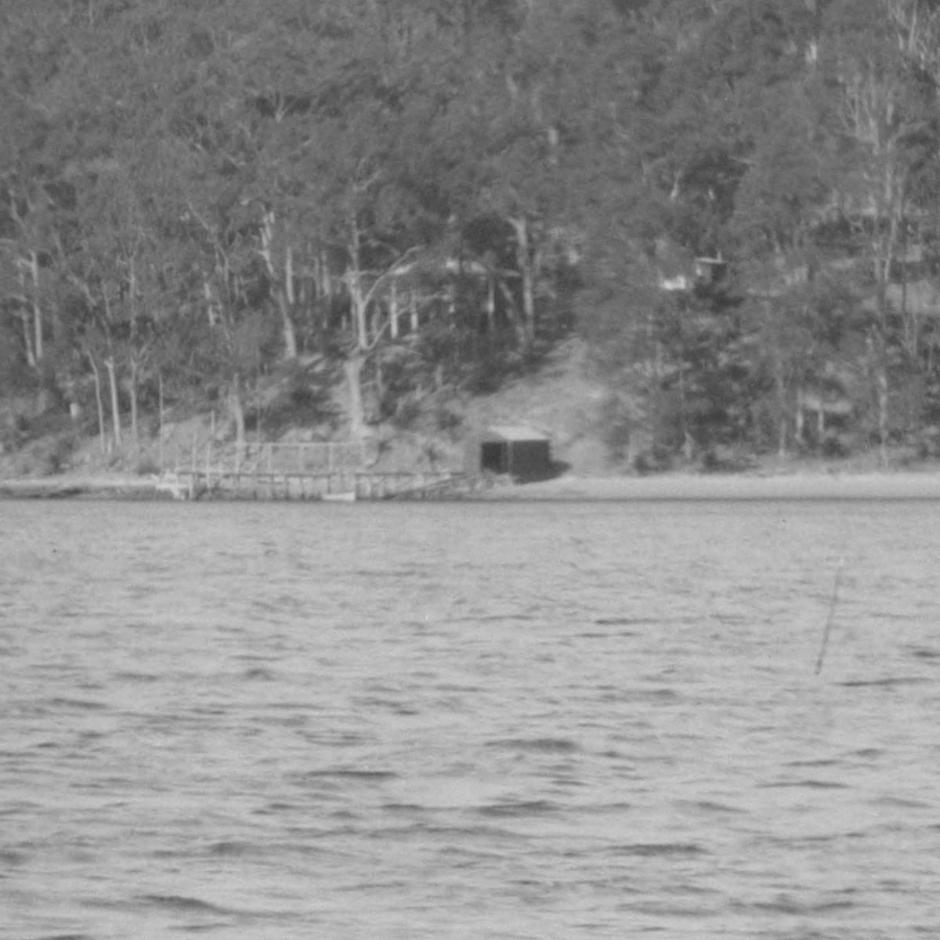
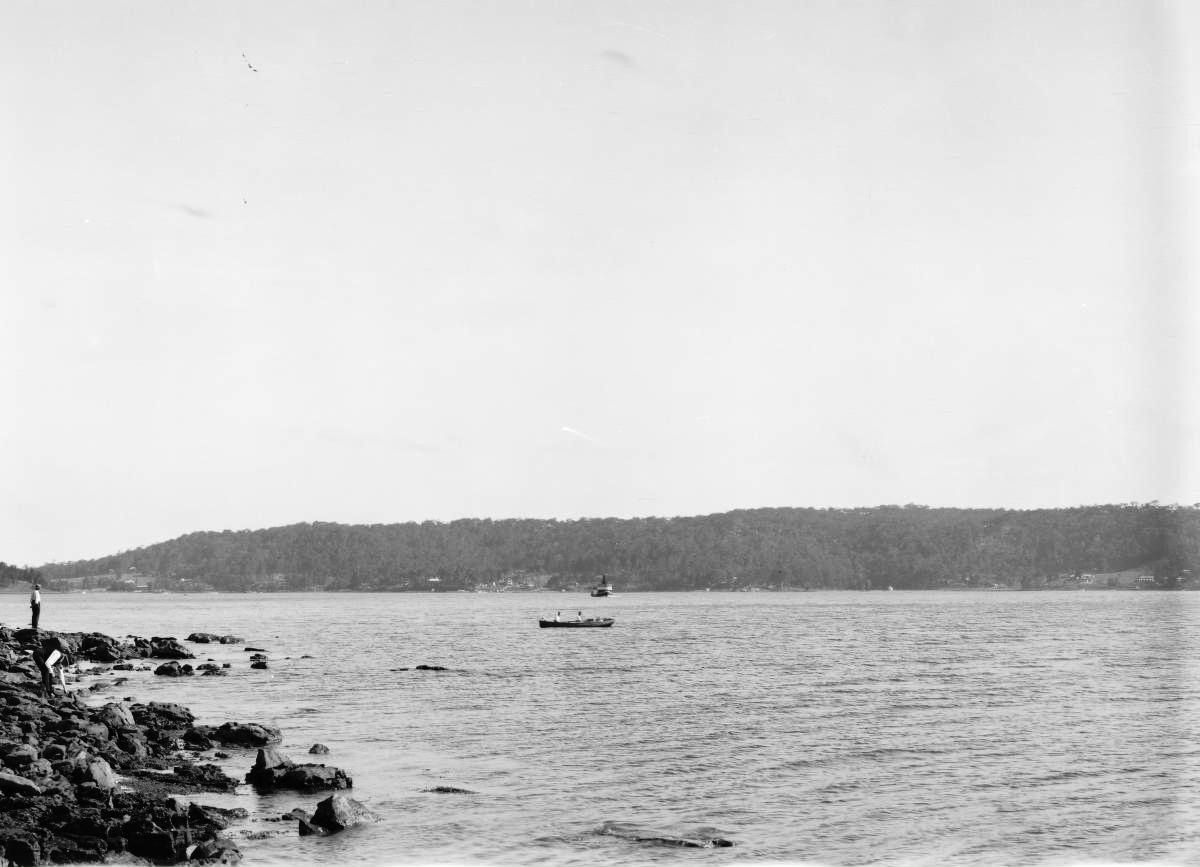
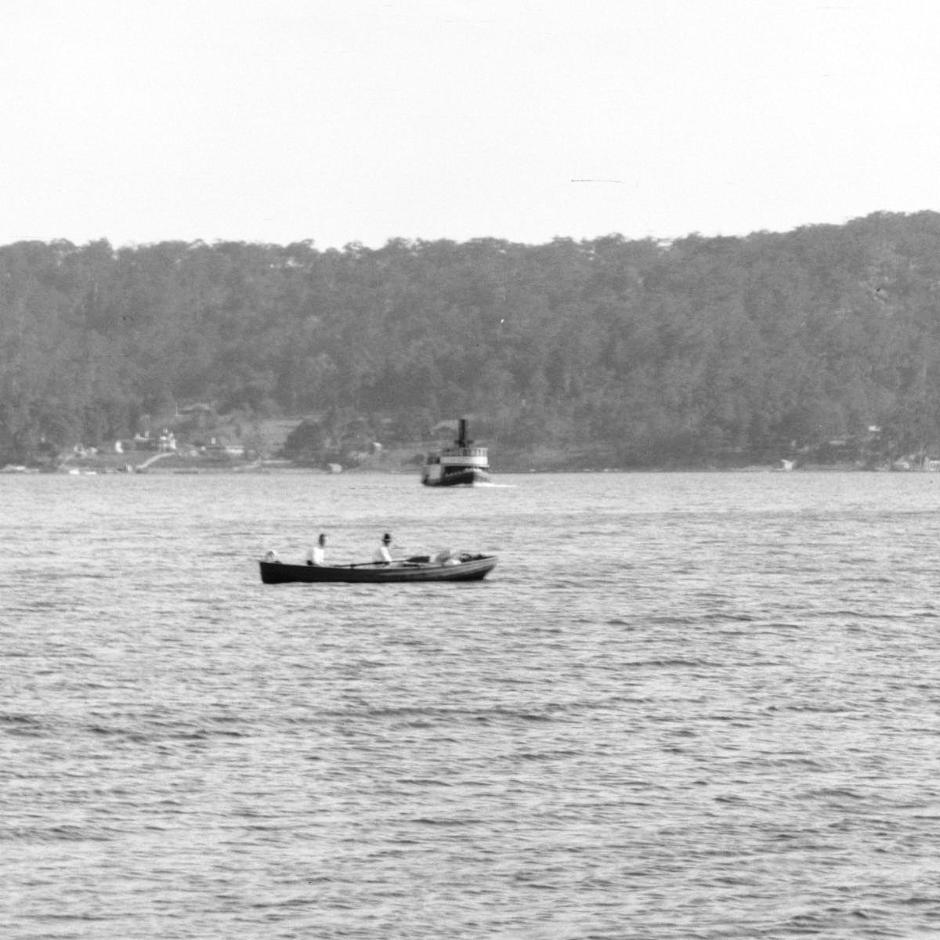
Taylors Point Jetty and Reserve
Alongside what was the old Torpedo Wharf at Clareville is Taylors Point jetty. This was a later addition to the foreshores and is gazetted as foreshores in Pittwater Council's Reserves lists:
Taylors Point Reserve Reserve No.: 554 Area (ha): 0.099 Asset No: A12293
Location ( eg, street frontages): Suburb / Locality: Land Title Reference: Taylors Point Road, Hudson Parade & ROW Hudson Parade
Avalon Lot 43 & 44 DP 13760 Classification: LGA 1993, Category(s): Zoning:
Community Land Park-natural area foreshore 6 (a) Existing Recreation: A Pittwater foreshore reserve with lawn areas for picnicing, a public wharf, fenced tidal pool and two dinghy storage facilities. The reserve is in two sections as it is bisected by an Australian Defence facility. Soil Landscape (s): Beach and shoreline (100%) Watagan:
Warringah - Construction of a jetty at Taylor's Point, Pittwater, near Clareville wharf 120 feet long and 6 feet wide Plans at the shire office, Brookvale. TENDERS. (1921, June 1). The Sydney Morning Herald (NSW : 1842 - 1954), p. 9. Retrieved from http://nla.gov.au/nla.news-article15935268
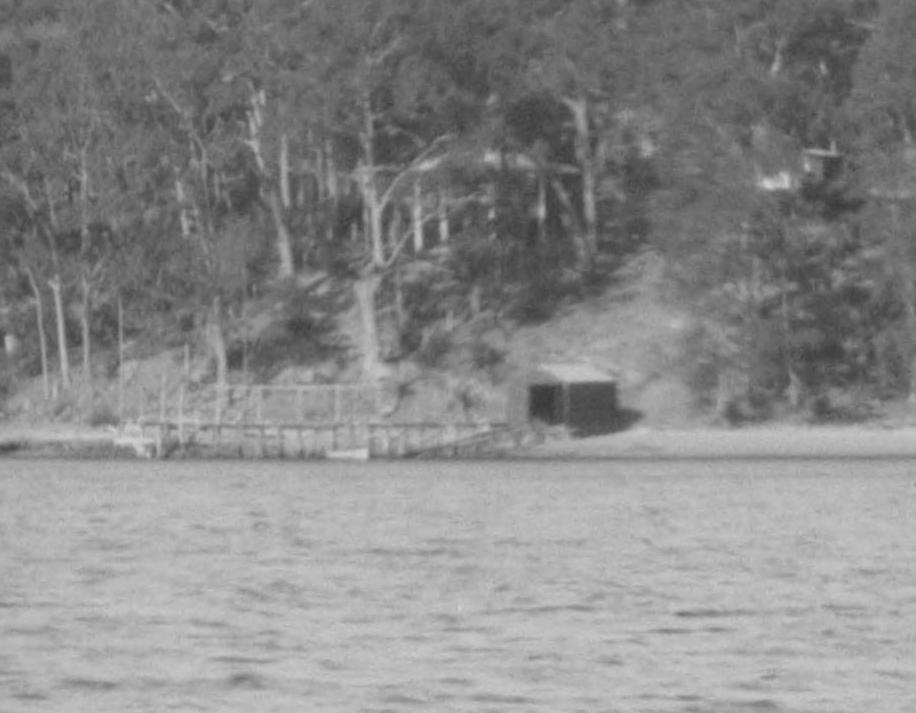
'Panorama of Taylors Point with real estate sign advertising upcoming land subdivision', Pittwater, New South Wales, Circa 1917-1920, courtesy National Library of Australia., Image No.: nla.pic-vn6149436 - section from, circa 1921
This 'advertorial' appeared a few times during 1903 - but at least we get to see him!:
HUDSON'S EUMENTHOL JUJUBES. Manufactured by Mr, G. Hudson, Ipswich.
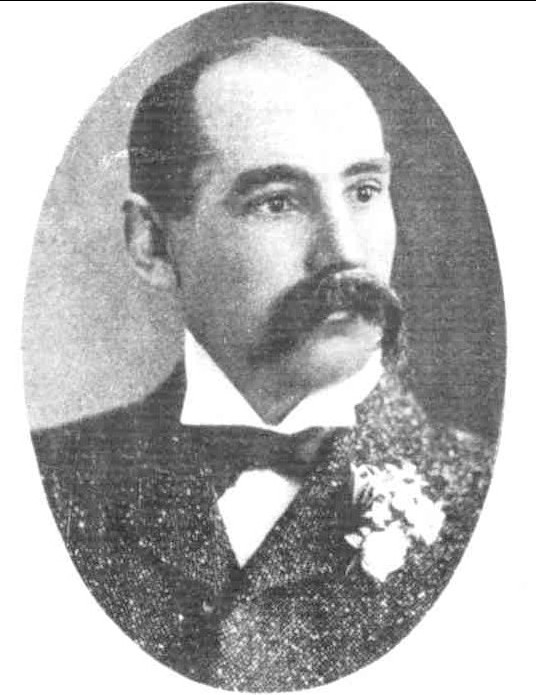 Illustrations herewith presented deal with a preparation that is extensively and favourably known in Australia. Mr. George Hudson, the inventor and manufacturer of Eumenthol Jujubes, has resided for some years in the Northern State. He was born at Hobart, 1863, and received his early education at the late H. M. Pikes's City School. Sydney attracted him in 1878, and seven years were there spent in the combined study of chemistry and dentistry. The diploma in the former was obtained at a special examination held by the Pharmacy Board in June 1884.
Illustrations herewith presented deal with a preparation that is extensively and favourably known in Australia. Mr. George Hudson, the inventor and manufacturer of Eumenthol Jujubes, has resided for some years in the Northern State. He was born at Hobart, 1863, and received his early education at the late H. M. Pikes's City School. Sydney attracted him in 1878, and seven years were there spent in the combined study of chemistry and dentistry. The diploma in the former was obtained at a special examination held by the Pharmacy Board in June 1884.
GEORGE HUDSON, Proprietor of Hudson's Eumenthol Jujubes.
After building up a successful business at the Glebe, Mr. Hudson found it necessary, on account of his health, to spend some time in travelling, finally establishing himself at Ipswich, where he is now one of the leading figures in business circles. He is cosmopolitan in his ideas and sympathies, and, gathering material from all available sources, he has kept himself in the front rank of his profession. At the outset Mr. Hudson realised the far-reaching importance of antiseptics in the cure and prevention of disease, and was an enthusiastic admirer of Dr. (now Lord) Lister for his famous discovery. The dual experience as a chemist and dentist has impressed upon Mr. Hudson the wide utility of an antiseptic for keeping the oral mucous membrane in a healthy condition and preventing decay of the teeth.
Eumenthol Jujubes, the result of long and costly experiments, have been produced to attain this end, and the endorsement they have received from members of the medical profession and dentists in all the States emphatically marks their success. Prior to their introduction in 1891 there was no effectual yet harmless antiseptic which could be freely used by the public. The most powerful antiseptics were not only poisonous, but, like carbolic, strongly caustic. The proprietor of Eumenthol Jujubes, as an experienced pharmacist, decided to obtain his principal Ingredients from the vegetable kingdom. Even the best native oils contain a large percentage of deleterious matter, such as phillandrene, so often met with in eucalyptus. To avoid these impurities and achieve the best, results Mr. Hudson made arrangement with the largest firm of European distillers to extract only the active constituents (the inherent life) for his use.
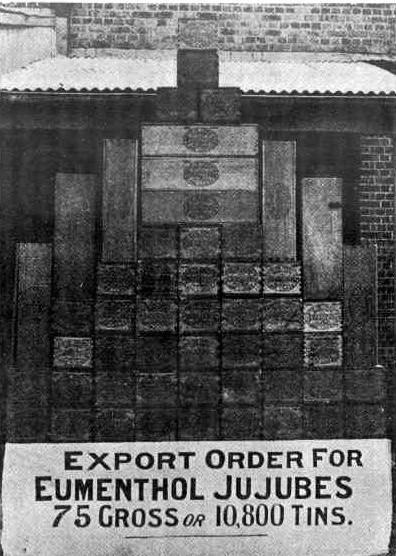
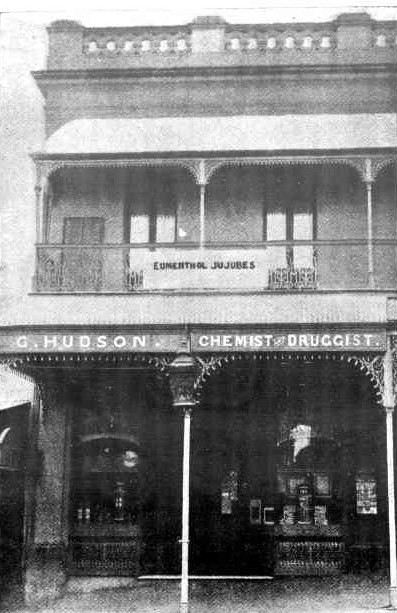 To this unique method and the scientific skill employed in treating each of the many ingredients of Eumenthol Jujubes are due their striking effectiveness. The merits of Eumenthol Jujubes once made known, their popularity soon spread, first in Queensland, then in New South Wales, and they are now rapidly growing in favour in all the States of the Commonwealth and New Zealand, whilst orders come to hand from different parts of the Old World.
To this unique method and the scientific skill employed in treating each of the many ingredients of Eumenthol Jujubes are due their striking effectiveness. The merits of Eumenthol Jujubes once made known, their popularity soon spread, first in Queensland, then in New South Wales, and they are now rapidly growing in favour in all the States of the Commonwealth and New Zealand, whilst orders come to hand from different parts of the Old World.
They have been found of great value to public speakers and singers, and several well known people have already testified to this effect. Eumenthol Jujubes were exhibited at the last Australian Medical Congress, held in Brisbane in 1899,and the 'Australasian Chemist and Druggist,' published in Melbourne, in its report of the them says : — ' Mr. G. Hudson, of Ipswich, had an exhibition of his Eumenthol Jujubes, which are put. up inelegant tin boxes, and are certified to be effective in the destruction of bacteria, and in the prevention of their growth. This proprietary has taken a hold upon public favour, and is certainly a good combination of medicaments in a convenient form.' The' Australasian Medical Gazette ' reports favourably on them, and concludes by saying : — ' They should prove of great service in affections of the throat and voice.' Mr. W. A. Dixon, F.I.O., F.C.S., the Public Analyst of Sydney, after an exhaustive test, says :' There is no doubt that Eumenthol Jujubes have a wonderful effect in the destruction of bacteria, and preventing their growth.'
Many dentists recommend the daily Use of Hudson's Eumenthol Jujubes. Dr. Leon Williams, of London, the great dental authority, says : ' I have repeatedly pointed out, that, in my judgment, the greatest hope for the future in the saving of human teeth lies in the direction of prevention of decay by the daily use of germicides, and I am, I believe, speaking with all due caution when I say that, in my judgment, two-thirds of the decay of teeth now going on is preventable. Conceding the fact that the chief cause of decay is the presence of bacteria, it is one's duty to apply some remedy for freeing the oral cavity of these destructive organisms, realising that in a scientifically clean mouth there can be no decay.' A small piece of Hudson's Eumenthol Jujubes held in the mouth destroys all forms of bacterial life, odours, and decomposing matter, and prevents the formation of the horn-like film of bacteria over the surface of the teeth which furnish a lodging for the acid-producing organisms of decay. The widespread popularity of Eumenthol Jujubes, whilst due undoubtedly to their intrinsic merits, must also be attributed to some extent to the tact and energy of the proprietor, and to the effective and carefully-planned methods Le has adopted in introducing them to the public.
Our illustrations include views of Rose Hill, Mr.Hudson's delightful residence on Limestone Hill, one of the most popular suburbs of Ipswich. The residence commands a fine view of the surrounding country.
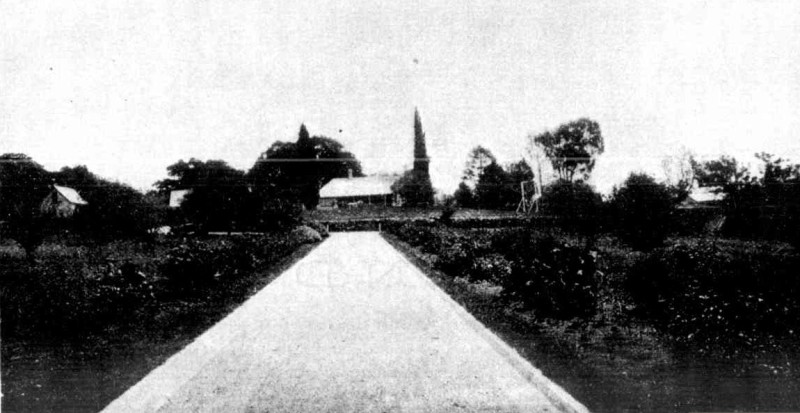
ROSE HILL, IPSWICH, RESIDENCE OF G. HUDSON.
HUDSON'S EUMENTHOL JUJUBES. (1903, June 17). The Sydney Mail and New South Wales Advertiser (NSW : 1871 - 1912), p. 1497. Retrieved from http://nla.gov.au/nla.news-article165188669
MR. G. I. HUDSON. The funeral took place yesterday of the late Mr. George Inglis Hudson, of Wunulla-road, Woollahra Point, who died at a private Hospital, Darlinghurst, late on Wednesday. He had been managing director of the Eumenthol Chemical Company, and had formerly resided in Ipswich, Queensland.
The remains were interred in the Waverley cemetery, following a service at St. Stephen's Presbyterian Church, Macquarie-street. The services at the church and the graveside were conducted by the Rev. P. Macdonald of Mosman.
The chief mourners were the widow and daughter (Mrs. Doris Olding). Among those present were Mr. P. Chaffey (Chief of Staff) Mrs. Chaffey, Dr. Wertz (Vice-Consul for Germany) Sir Allen Taylor, Lady Richards, Mr. W. H Childs (late Commissioner of Police), Dr. Hamilton Marshall, Dr. Evan Jones, Captain Carter, Messrs. Percival and Mackie (representing the Randwick Council). Messrs. Alpress, Linklater, W. Arnott, H. Campbell, Felix Booth jun., W. Hughes, George Olding, V. A. Haigh, F. Brown E. C. Pitt, J. Parram, Bruce Ryrie, Messers. Collis, Hubert Palmer, Herbert Palmer, Lintor Palmer, Baty, Joyce, Cridland, Norman Saywell, F. Adams, H. Ludowici, and Paton; Mr. and Mrs. B. Chew, Mr. and Mrs. S. McCloy, Mesdames Symons, Saywell, and Morrisby; Misses M. and N. McCloy, Abel, Lorking, and Chiplin. MR. G. I. HUDSON. (1936, April 18). The Sydney Morning Herald (NSW : 1842 - 1954), p. 23. Retrieved fromhttp://nla.gov.au/nla.news-article27991758
CHEMIST'S ESTATE SYDNEY, Friday. An estate valued at £162, 672 was left by George Inglis Hudson, manufacturing chemist, of Woollahra, who died in April last. Included in the bequests was £1000 to the University of Sydney to encourage further investigation of the science of organic chemistry. The bulk of the estate was bequeathed to the widow and children. CHEMIST'S ESTATE. (1936, August 22).Newcastle Morning Herald and Miners' Advocate (NSW : 1876 - 1954) , p. 10. Retrieved August 8, 2014, from http://nla.gov.au/nla.news-article140506388
PROBATE OF WILL. GIFT TO UNIVERSITY. Mr. George Inglis Hudson, manufacturing chemist, who died on April 15, left £1000 by his Will to the University of Sydney, on trust to apply the Income for the benefit of students of organic chemistry. He also left a legacy of £100 to the Congregational Church, Pitt-street. The residuary estate passes on trust for testator's wife and daughter, with remainder to grandchildren. Mr. Hudson appointed his wife. Mr. G. A. Parkhill, and the Perpetual Trustee Co., his trustees and executors. The estate has been sworn for probate at £162,673. PROBATE OF WILL. (1936, August 22). The Sydney Morning Herald (NSW : 1842 - 1954), p. 14. Retrieved from http://nla.gov.au/nla.news-article17263351
MRS. LOUISE HUDSON. Mrs. Louise Inglis Hudson, who died at her home, Herewai, Woollahra Point, was born at Sunny Corner, in the gold mining district, outside Bathurst. She was the widow of the late George Inglis Hudson, founder of the Hudson Eumenthal Chemical Co. She was a foundation member of the Randwick Red Cross and worked as a VAD during and after the war. She was also a member of the N.S.W. Victoria League and the Queen Victoria Club. MRS. LOUISE HUDSON. (1938, August 3). The Sydney Morning Herald (NSW : 1842 - 1954), p. 9. Retrieved from http://nla.gov.au/nla.news-article17496032
BATHING AT COOGEE. TO THE EDITOR OF THE HERALD.
Sir,-With reference to the regulations about to be adopted for the control of bathing at Coogee, it does not seem likely that much good will result there from unless public bathing is prohibited during certain hours of the day, say from 10 a.m. to 5 p.m.; at any rate, this should be so, at least, on Sundays, for that seems to be the principal day for the disgraceful exhibitions referred to in the daily press by different correspondents. A place so conveniently situated to the city as Coogee is should be principally for the use of children, and this was so a few years ago; where-as a visit to the place now shows that instead of being visited by parents who wish to give the little ones an outing, it is monopolised, especially on certain days, by the larrikin element of the city; and Coogee has such an unenviable reputation that parents have carefully to avoid this delightful seaside resort. There is no reason why Coogee should not be like Margate and other seaside places in the old country, and to make it so the only loss would be that of a few tram fares; but I have no doubt that if early morning trams were run conveniently there would be a large increase in the traffic during those hours. I am, etc, GEORGE INGLIS HUDSON. BATHING AT COOGEE. (1908, February 7). The Sydney Morning Herald (NSW : 1842 - 1954), p. 4. Retrieved from http://nla.gov.au/nla.news-article14954370

Panorama of Taylors Point, Pittwater, New South Wales, 3 [picture]- Image No nla.pic-vn6149433 courtesy National Library of Australia, - Part of Enemark collection of panoramic photographs [picture] [1917-1946] . Below: Sections from above panorama
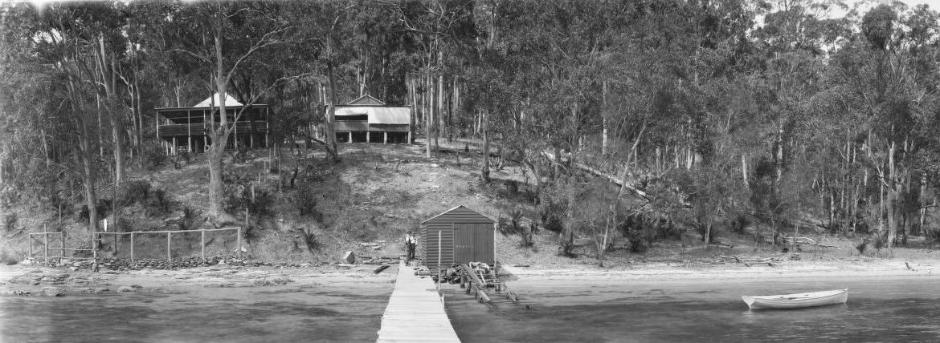
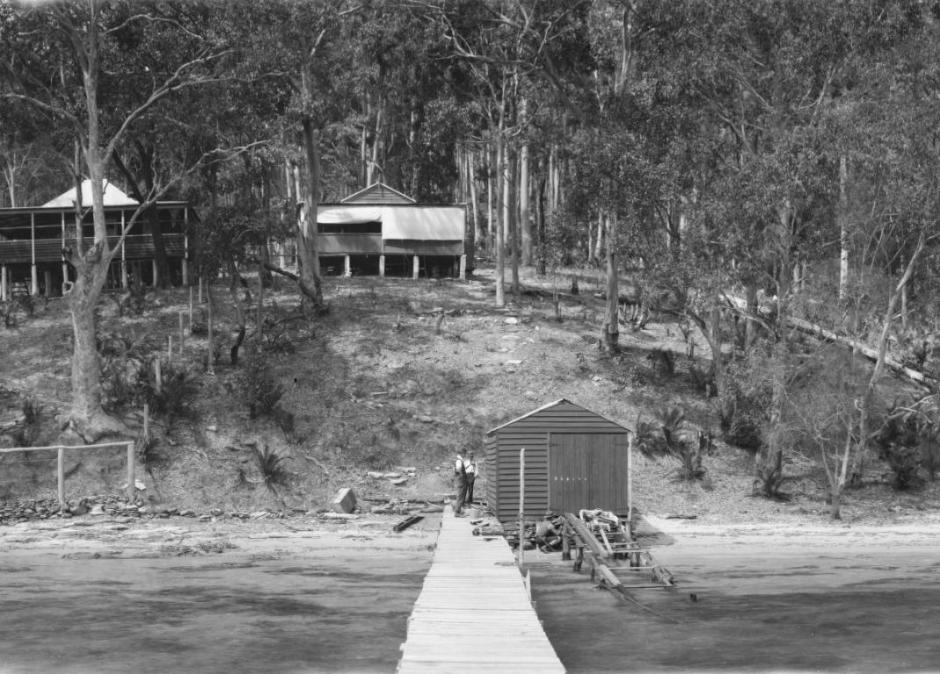
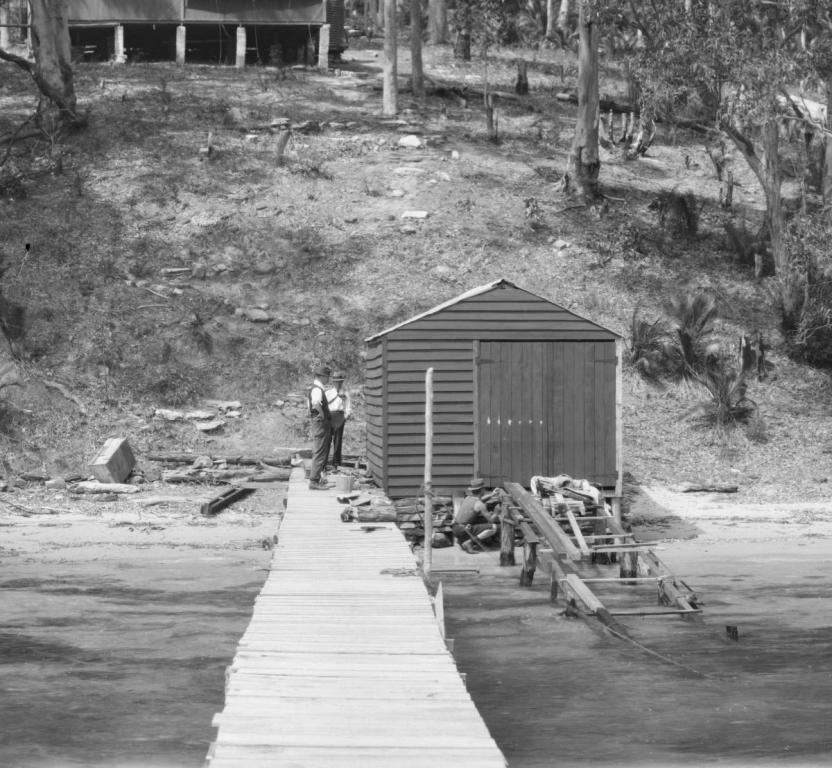
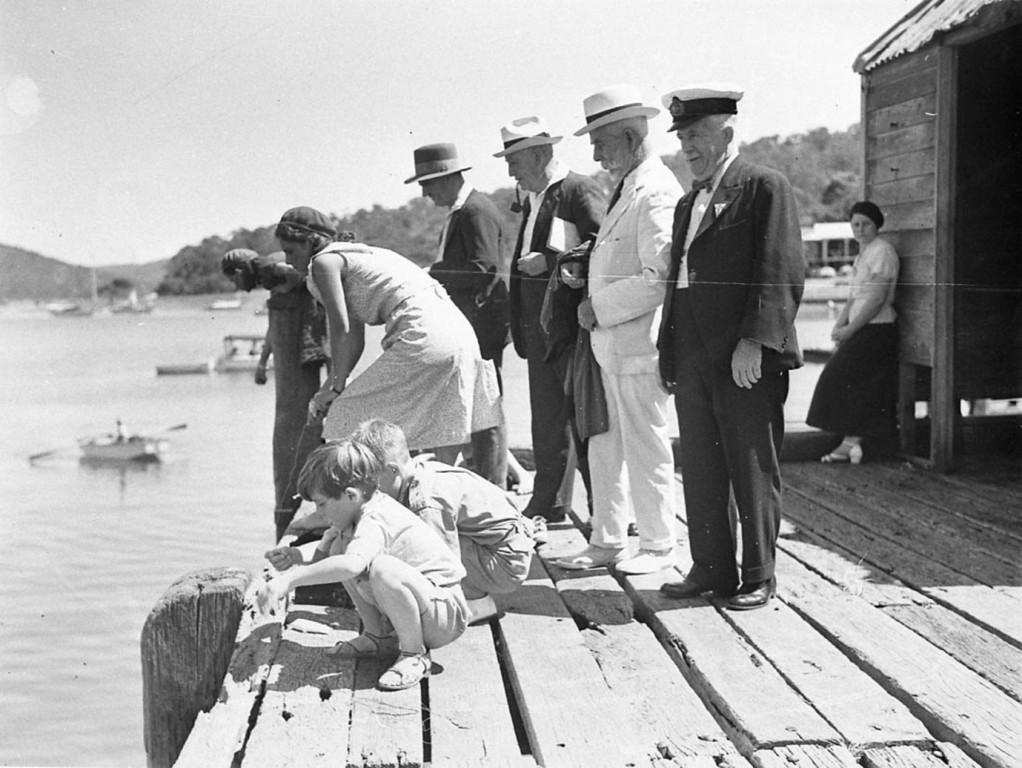
Top: 'Fishing from a jetty at Taylor's Point' - taken by Sam Hood during Pittwater Regatta, Broken Bay - possibly officials ensuring Taylors Point mark for races is rounded. Image No.: hood_06542, circa 1930's, courtesy State Library of NSW
MOTOR BOATING. Pittwater Regatta.
There will be an all day programme of motorboat racing controlled by the Royal Motor Yacht Club of New South Wales at the 24th annual Pittwater regatta on Saturday The first event a four miles handicap for local boats will start at 10 30a m and the sixth and last a four and a half miles for outboard motors at 415 p m Good entries have been received and both the great metropolitan clubs the Royal Motor Yacht Club of New South Wales and the Australian Motor Yacht Squadron are well represented
The starting times are - J M Dempster Handicap for local boats Course from starters boat off Salt Pan Point to Towler Bay near Long Nose Point and back one lap four miles -No 514 Heather (W Forsyth) 10 30 am 8, Kiawa (J F Robinson) 10 32 52 545 Thistle(Dr D Fraser) 10 35 20 78 Catherine Ellen (A. Lambert) 10 37 24 10 Arrow (Dr du Maurier)110 48 40 rn Redwing (R R Doyle) 10 50 5421 Wingo (R Penniman) 10 54 11 Pam (J Webster) 10 54 the handicap of Bronzewing (O Snow) is withheld
Miramar Cruiser Handicap open to all comers. From Salt Pan Point to near Long Nose Point and back four miles-No 51 Baby Miramar (S r 'Doyle) 1145 am 21 Fortuna (Dr R Storer)1158 38 41 Binghi II (A W Brown) 1159 1620 Trixie (B Paul) 1159 12 6 Koonya (W JDalgarno) 1159 So 7 Millawa (R B Passau)121 56 545 Thistle (Dr D Fraser) 121 56 72, Constance (G Marner) 12 2 42 78 Catherine Ellen (A Lambert) 12 3 32 70, Alkooelle (C Jacobs) 12 5 12 40 Sylph II (W D Lawson) 12 7 50, 514 Heather (W Forsyth) starting time withheld
A C Cooke Speed Boat Handicap for boats 12 miles an hour and over Two laps eight miles -No 10 Arrow (Dr du Maurier), 130 pm. 60 Redwing (R R Doyle) 132 40 11 Pam (J Webster) 140 40 542 Wings (R Penniman) 140 4021 Whoof (A F Jefferson) 142 40 543 Bronzewing (G Snow) starting time withheld
Outboard Motor Boat Handicap Course from Salt Pan Point to Taylor's Point and back four times six miles -No 12 Saucy Snail II (J Manton) 2 45 p m 14 Revé dOr (J Middows)12 47 54 15 Miss Joy (J Wylie). 2 48 48 16 Sonora Belle (A Moodie) 2 49 17 Miss Kay (C Grattan Smith) 2 50 36 9 Miss Radio II (A V Price)2 51 12 l8 Lady Thelma (N Cohen) 2 5142 19Oh My (W Heine) 2 54 36 2 Saucy Snail III(A R Turner) 2 54 30
E C Griffith Handicap for boats seven to 16 miles an hour Salt Pan Point to Long Nose Point and back twice eight miles-No 23 Fortuna (Dr R Stoier) 3.15 p m 41 Binghi II (A W Brown) 3.16. 20 8, Kiawa (J Robinson) 3 16 44 28 Trixie(E Paul) 3 1732 6 Koonya (W Dalgarno)3 17 40 7 Millawa (R Passau) 3 2140 72 Constance (G Marner) 3 ..3 12 70 Alkooelle (C Jacobs) 3 28 12 40 Sylph II (W D Lawson)3 33 40 514 Heather (W Forsyth) and Baraba (J Foy) starting times withheld
Outboard Motor Boat Handicap Salt Fan Point to Taylor's Point and back three times 41 miles -12 Saucy Snail II (J Manton) 4 15pm 14Reve d Or (H Middows) 4 17 lo 16 Sonora Belle(A Belle) 4 l8 17 Miss Kay (C Gratton Smith)4 19 1. 9 Miss Radio II (A F Price) 4 19 39 l8Lady Thelma (N Cohen) 4 20 2 19 Oh My (D Heine) 2 Saucy Snail III (A R Turner) 4 22 12. MOTOR BOATING. (1930, December 25). The Sydney Morning Herald (NSW : 1842 - 1954), p. 3. Retrieved from http://nla.gov.au/nla.news-article16741601
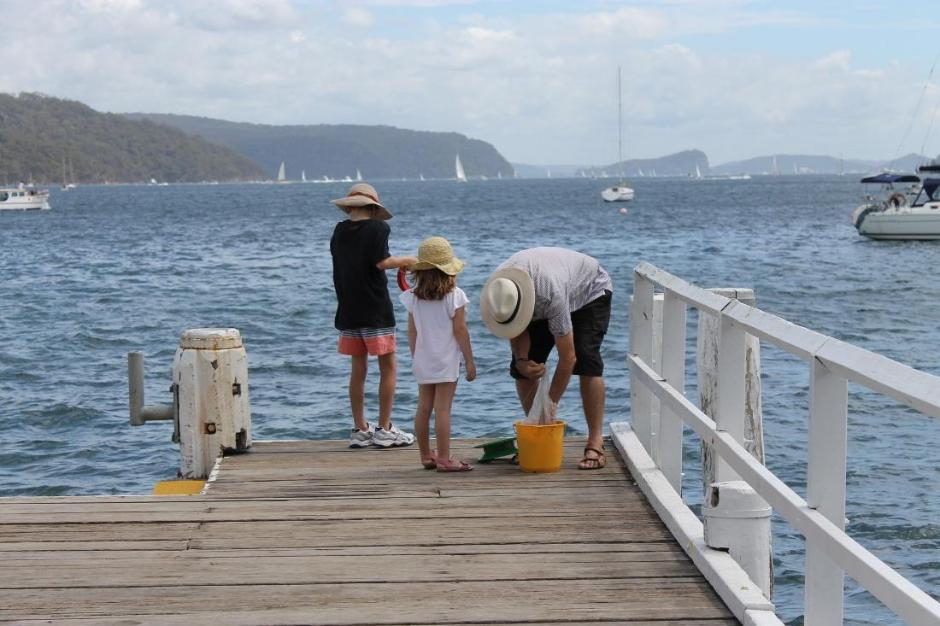
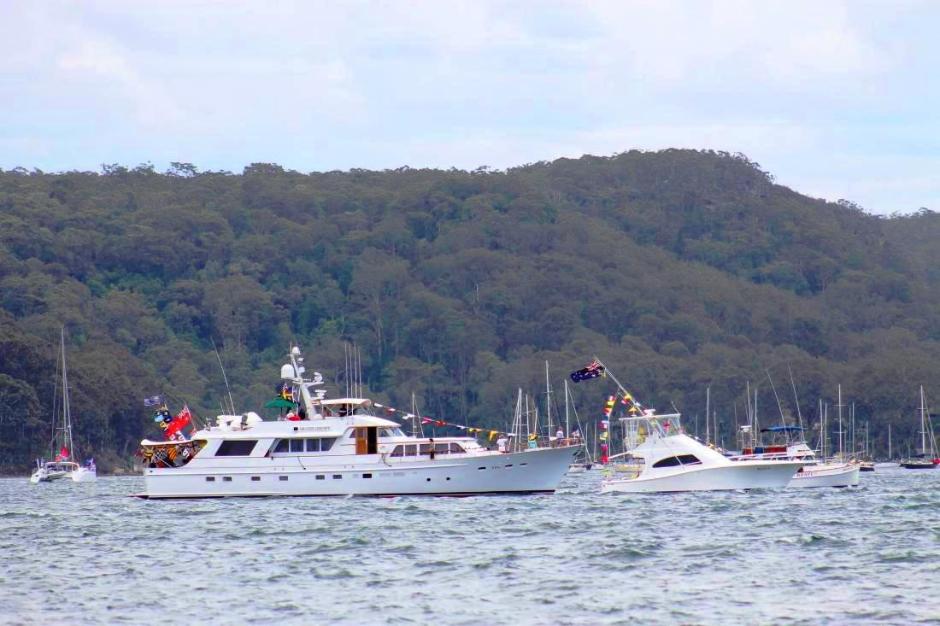
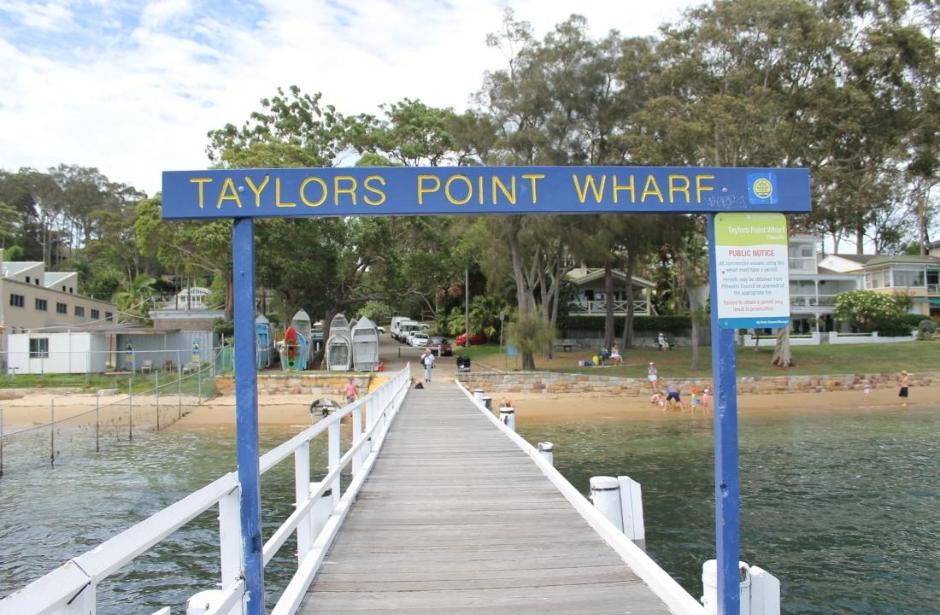
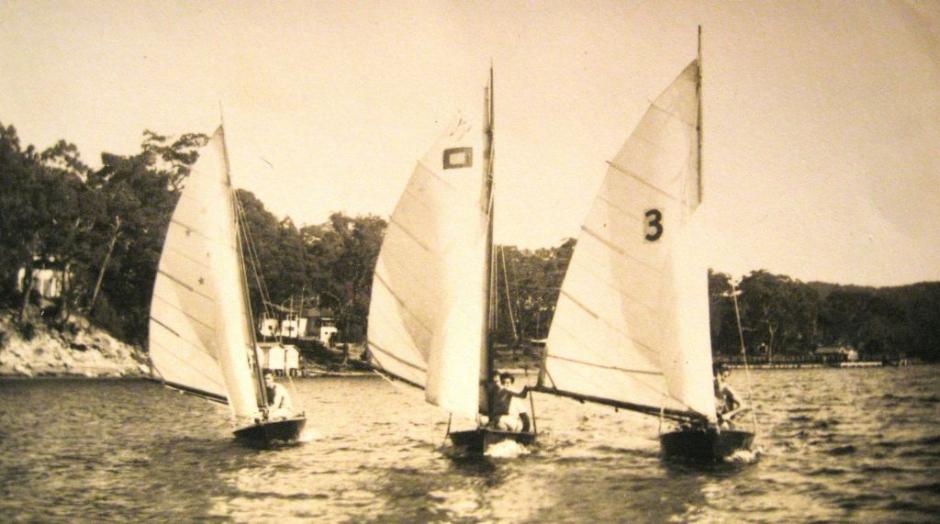
Avalon Sailing Club - VJs Clareville - A Grosvenor SOUTHERN CROSS, Les & Eileen Vaughan FLASH & Harold & June Vaughan DEFIANT pre WWII - Picture courtesy John Vaughan
RAWHITI'S DOUBLE - YACHTING AT PITTWATER
Eu-Na-Mara Absent
Outstanding feature of the sailing at Pittwater regatta on Saturday was Rawhiti's dual victory in the two races for the deep-keel yachts.
THE nominated skippers' handicap racox for all yachts over a five miles course, carried the name of Fred S. Adams, who has been associated with Pittwater regatta since it was launched in a small way in 1906. Rawhiti, as usual, was on scratch. The only other craft to share the same mark, Eu-na-Mara, the Victorian, challenger for the Sayonara Cup race to be contested this mouth, did not compete. Percy Arnott's new eight-metre boat, Vanessa, which will defend the trophy for New South Wales, was on a handicap of 3 minutes. It would have been interesting to have seen how the two compared, for it would have thrown some light on the destiny of the Sayonara Cup. Vanessa finished 17 seconds behind Rawhiti in second place.
WON BIG CUP.
Arthur Stevens was, as usual, at the tiller of Rawhiti in the Pittwater Regatta Cup race, sailed over a course of 15 miles. Brand V. went to the van second time round, but with only three-quarters of a mile to go had to give way to Rawhiti, off Taylor Point. The latter won by 27sec from Brand V., with Vanessa third. Brand V., which was receiving a minute start from Vanessa, at 15 min, improved on her handicap, and led her rival boats by 5min 17sec.
CAPRICE SAILS WELL.
Caprice went close to securing the double also. With A. J. Stone at the tiller, she carried off the big race for the Scotland Island Clip from A. C. Barker's Sapphire, with Foam (L. V. Buckingahm)third. Only 41sec separated her from Riawena, winner of the Mischief Memorial Handicap. Darcy Huddleston was in charge of Caprice in that race, and sailed her remarkably well for his first race.. Mrs. R. Lee Brown showed that she was capable of sailing with the men skippers, and earned Rear Commodore Claude Plowman's special prize for taking her charge into third place. The Middle Harbor 10ft skiff, R. Palmer's Melrose, won the championship of Broken Bay from Fortuna by 5min 5Ssei;.Meea was third, and Wonkey fourth.
MOTOR BOATS THRILL.
The outboard motor boats provided many thrills, but none more sensational than when' H. McEvoy's Cettein IV. Got out of control at 30/80? miles an hour, and made a spectacular dive to the bottom of the sea. The accident occurred during the Stuart F. Doyle Handicap. R. Smith's Boo Saada filled third place, but in the next race — the outboard championship of Broken Bay — she also came to grief. Approaching Scotland Island, she struck a big piece of wood. Her bottom was stove in and she sank within a few seconds. Lady Evinrude (L. H. Larsen), one of the latest outboards, after winning the A. C. Cooke Handicap for all-comers, was the next to meet with an accident. She emptied her crew in the water while negotiating one of the turns. The speed-boat races unfortunately, could not be witnessed by the big crowd on Salt Pun Point, as they wore staged in Horseshoe Cove about half a mile away. Dr. Fraser’s Thistle won the W. Herman Slade Handicap for local boats, while E. Williams'; Elto III. gained a surprise victory in the Broken Bay outboard championship. Struth, which filled second place, was in the same position In the R. Walder speed handicap. Bronzewing(G. K. Snow) was first.
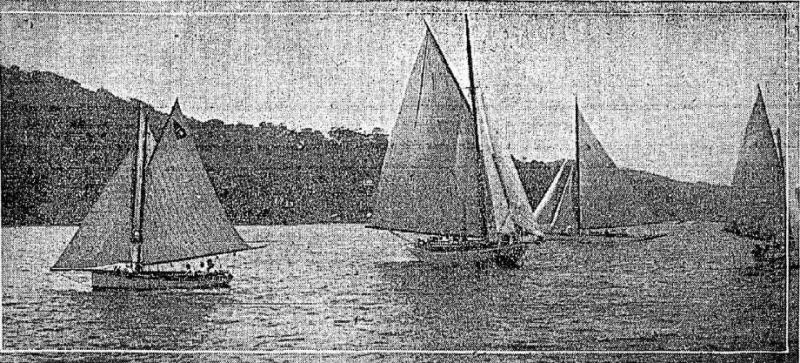
Yachts cruising at the annual Pittwater Regatta on Saturday, last.
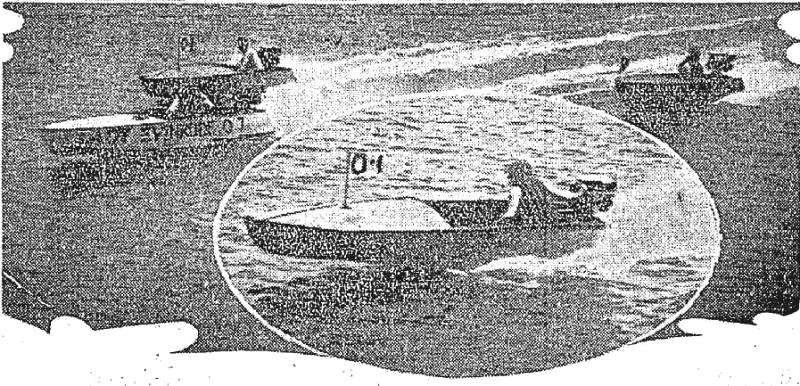
One lap to go in the Stuart Doyle outboard motor race at the Pittwater Regatta. Inset, the winner, Elto III RAWHITI'S DOUBLE. (1929, January 1). Referee (Sydney, NSW : 1886 - 1939), p. 15. Retrieved from http://nla.gov.au/nla.news-article136204610
FIGHT WITH FIRE NEAR AVALON. MEN ALMOST TRAPPED. REFUGE IN WELL.
For five hours yesterday bushfires threatened about 100 homes and week-end dwellings on the hills at the back of Avalon. Fanned by a south-easterly wind, the fires swept down from the plateau and burnt through light timber and grass near Pittwater. One of the volunteer fighters, A. Butler, of Narrabeen, and a fireman, were surrounded by flames and almost suffocated by thick smoke. They crawled 18ft down a well in the yard at one of the houses. After 10 minutes, the smoke forced them to climb to the surface, but the fire had then burnt itself out.
Constable Simpson, of Mona Vale, who reached Avalon first, telephoned for aid. Afire tender with five men under Station-officer Bissett was sent from headquarters, and eight members of the Narrabeen volunteer brigade hurried to the Are. Sergeant Huckins and three constables, from Narrabeen, and Con-stable Gold, from Manly, also Joined the fighters.
BREAKS AROUND HOUSES.
While some of the men fought the advancing flames others burnt breaks around homes from Clairville to Taylor's Point. At Hill-top-road the fire was beaten back from eight houses. On the sea side of the hills the homes of Colonel Johnson, Colonel Reynolds, and Mr. A. R. Harris were threatened, and at Mr. R Row's Cabbage Trees Estate, 400 yards away, the flames scorched the garage near the house. Mr. R. Wilson's stone house was blackened by flames. At many places hoses were used to fight the fire. Water was connected to Avalon only a fortnight ago.
Russell Brown, a Boy Scout from Goulburn, joined the fire fighters. Constable Brown said: "He carried hoses, turned on taps, and worked harder than any of us. His assistance was most valuable." FIGHT WITH FIRE NEAR AVALON. (1936, November 13). The Sydney Morning Herald (NSW : 1842 - 1954), p. 10. Retrieved from http://nla.gov.au/nla.news-article17287935?temp-new-window-replacement=true
PLEA FOR ENLIGHTENED GAMING LAWS; MR. YELDHAM.
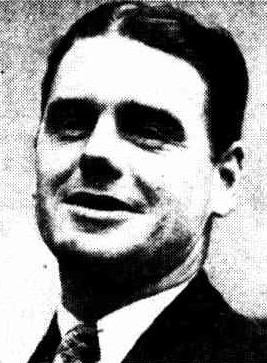 IT is time the antiquated gaming laws were altered to allow respectable people to have some enjoyment in their own 'homes,' solicitor J. Yeldham urged at Manly Police Court last week. Mr. Yeldham was appearing for 14 men and five women arrested by police who raided 'Anderson's Cottage,' Avalon Beach, on the night of May 5, when a baccarat game was in progress.
IT is time the antiquated gaming laws were altered to allow respectable people to have some enjoyment in their own 'homes,' solicitor J. Yeldham urged at Manly Police Court last week. Mr. Yeldham was appearing for 14 men and five women arrested by police who raided 'Anderson's Cottage,' Avalon Beach, on the night of May 5, when a baccarat game was in progress.
Right: Mr. Yeldham
EACH of the persons had entered a plea of guilty to a charge of having been found in a common gaming house. ‘The players did not give any trouble and, in fact, 'escorted' the raiding police to Manly Police Station in 10 limousines, which were parked outside the place,' Mr. Yeldham said. Sgt. Maizey: ‘They appeared very happy in their 'sylvan surroundings.' Describing the raid, Det. K. Paton told Mr. Ryan, S.M., that when police entered the house at 11.30 p.m. on May 5 they seized £176 from the gaming table. In addition, many of the players were holding large bundles of notes in their hands, Det. Paton said. 'When police arrived at the cottage, which is situated in rustic surroundings, the back door of the premises was wide open and we could see the game in progress,' the detective stated. 'The room in which the game was being played was brilliantly illuminated. An elaborate supper had been provided, with liquor refreshments. 'Some of the players are well known identities at Avalon and Palm Beach. The game is organised and moves from place to place.' Asking the court to impose a nominal penalty on the nineteen persons who were charged with being found in a common gaming house, Mr. J. Yeldham, solicitor, said the game was a friendly one played among local residents because there was no picture theatre or other form of amusement in the locality. Police Prosecutor (Sergt. Maizey):'That's strange.- Some of them came from Potts Point and King's Cross.'
Imposing a fine of £4 on each of the 19 defendants Mr. Ryan ordered the £176 seized by the police to be forfeited to the Crown. Those convicted were: Eva Gardiner (44), domestic, 14 Ocean St., Newport; Monica Haines (40), domestic, Beach St., Clareville; Richard Miller (20), laborer. 22 Pittwater Rd., Dee Why; Leslie Haynes (40), laborer, Beach Rd.. Clareville; Evelyn Maud Read (33), domestic, 3 Springfield Ave., Potts Point; Barbara Golladge(30), domestic, 7 Bourke St., Berala; Arthur William Jones (42), salesman, Barrenjoey Rd., Palm Beach; Frank Mason (52), gardener, Waterview St., Mona Vale; Herbert Edward Read(67), fruiterer, Barrenjoey Rd., Newport; Mary O'Connor (26), domestic, Ocean St.. Harbord; Charles George Joyce (34), gardener, Bassett St., Mona Vale; Sydney Gordon Joyce(30), gardener, Darley St., Mona Vale; Leslie James Anderson (45),agent, 22 'Winston Flats,' Victoria St., King's Cross; Roy Reginald Ronald Ellis (41), fisherman, Barrenjoey Rd., Palm Beach; Eric Tingle (30),hairdresser, Barrenjoey Rd., Newport; Henry Francis Gonsalves (41),fisherman, Barrenjoey Rd., Palm Beach; Albert James (42). gardener, Barrenjoey Rd., Newport; Alan Redman (42), gardener, Park St., Mona Vale; John Themas Joyce (32), gardener, Waterview St., Mona Vale. PLEA FOR ENLIGHTENED GAMING LAWS. (1945, May 13).Truth (Sydney, NSW : 1894 - 1954), p. 11. Retrieved from http://nla.gov.au/nla.news-article169358984
Clairville Pittwater -Furnished Beach Cottage Particulars 128 High st Willoughby. Advertising. (1932, October 22). The Sydney Morning Herald(NSW : 1842 - 1954), p. 5. Retrieved from http://nla.gov.au/nla.news-article16924427
PITTWATER Clairville sandy beach frontage definitely the best position available on the waterfront 3o0ft deep Owner will take £300 terms can be arranged 0194 Herald. Advertising. (1935, October 7). The Sydney Morning Herald(NSW : 1842 - 1954), p. 14. Retrieved fromhttp://nla.gov.au/nla.news-article17207215
DEEP WATER FRONTAGE suit boatshed, baths situated Claraville Pittwater } 175. _No 6957 Herald. Advertising. (1938, December 22). The Sydney Morning Herald(NSW : 1842 - 1954), p. 18. Retrieved from http://nla.gov.au/nla.news-article17550838
WANTED. Week-end Cottage, Pittwater, Clairville. Tailor's Point. UJ2219. Advertising. (1942, July 29). The Sydney Morning Herald(NSW : 1842 - 1954), p. 12. Retrieved from http://nla.gov.au/nla.news-article17827825
TAKE BEST OFFER, 30ft D.-ender Ketch, 2 Cabins, Radio. Eng., 2 Suits, Dinghy. Lav. Owner buying business. On board this week-end. Clairville. Pittwater. Advertising. (1949, April 9). The Sydney Morning Herald (NSW : 1842 - 1954), p. 15. Retrieved fromhttp://nla.gov.au/nla.news-article27578219
TAYLOR, John. - October 27, 1949, at his residence Newquay Clairville Beach, formerly of Vaucluse House aged 86 years. Family Notices. (1949, October 28). The Sydney Morning Herald (NSW : 1842 - 1954), p. 16. Retrieved from http://nla.gov.au/nla.news-article18138082
A TRIP TO PITTWATER.
Some friends of mine having purchased part of the Pittwater estate recently offered for sale, were anxious to see the land, and they invited me to accompany them. Saturday last was fixed for the trip. On that morning we were all up betimes. The night before we agreed that whoever rose earliest should call the others. Being known to rise on the first sound of the ' cock's shrill clarion,' I was expected to rouse my friends. At 5 o'clock when I went to do so I found that one of them had been up two hours, the others even longer. They had evidently worried themselves into wakefulness all night, for which there was no necessity, as a late sleeper might catch the first Manly boat, by which we were to leave Sydney. Saturday morning broke in smiling silence on the city and suburbs: it was one of those mornings which call forth praise and prayer to heaven for the blessing of such a climate as we enjoy in this Southern land. The waters of the harbour from our point of view (the heights of North Shore)looked like several lakes which were as calm as millponds. Our unrivalled harbour, it appears to me, presents scenes at, daybreak and by moonlight that cannot be viewed at any other time.
In summer mornings, before the sun rises, you may see creeping over the waters of its various nooks and bays gauze-like exhalations, which magnify the ships and boats in the stream. On the appearance of the great, vaporizer the mist is dispelled and the grand picture we all admire is unveiled. The nocturnal beauty of Port Jackson one never ceases to admire. Music only is wanted to make a moonlight view of it one of the most pleasurable sensations. Another harbour, pre-eminent for its capacity and safety,' and no mean rival of our own is more blessed in this respect, for the melody of the Shandon Chimes supplies the void felt here. On this I ponder,
Where'er I wander,
And thus grow fonder,
Sweet Cork, of thee ;
Why thy bells of Shandon,
That sound so grand on
The pleasant waters
Of the river Leo.
On board the Royal Alfred we were joined by a young gentleman who was also a guest. There were not more than half-a-dozen other passengers besides our party. Some of them looked sleepy and sullen, and appeared as if they had parted on bad terms with Morpheus. One of them who was late had to jump on board. The unamiable mood in which he appeared soon gave way to perfect equanimity, the effect, as one observed, of the soothing influence of the incense from the North Shore gums.
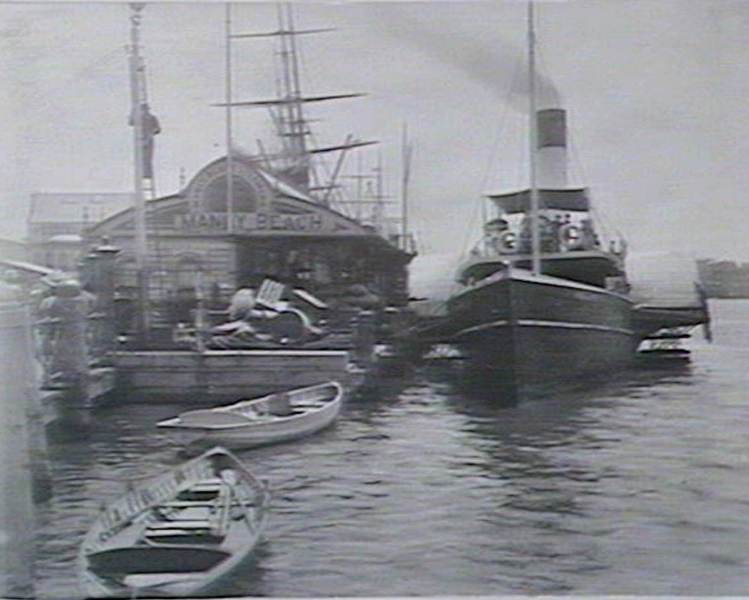
"Royal Alfred" at wharf Circular Quay, date; 9/1935 (?!), Image. No: d1_20453, courtesy State Library of NSW.
Arrived at Manly, we had an appetite for breakfast which many might, envy. This watering place reminds one of Passage, which Father Prout describes as situated
Upon the say;
'Tis nate and dacent,
And quite adjacent
To come from Cork,
On a summer's day.
The 'trap' which was awaiting us at, the hotel door, and which had been bespoken, was certainly not one of Kearey Brothers'. It had the appearance of a disused milk-cart., or a superannuated costermonger's conveyance. Our young companion did not like the look of it, but on being told there was no other available for our journey, he had sufficient of the Stoic in him to sink his personal feelings. Needs must when a Manly coach proprietor commands the drive to Pittwater. There is nothing very charming in the neighbourhood of the Pittwater road from Manly. Ducks and water fowl might find it a suitable abiding locality, but Manly-ites, if they have any regard for the future repute of their rising suburb, will extend it on the higher ground Spitwards.
Some four or five miles out of the township we overtook the 'royal mail coach' with its convoy conveying the mails and passengers to Boulton's or Newport at the head of the navigation of the Pittwater harbour. We sailed alone in this company until we crossed the Narrabeen Lagoon. As we emerged there from we descried a church, which appeared to be as well supported as the Smithy described in one of Swift's anecdotes. Seeing no residents around, we inquired where the congregation came from, but our Jehu was not a Matt Ryan. Indeed he was the most taciturn ' whip ' I ever travelled with.
Shortly after we entered upon the estate at Bilgola beach, where there is a deep leafy glen well adapted for the growth of bananas. On ascending to Bilgola Head a splendid view of the coast from Cabbage Tree Head to Barranjoee is obtained. The broad Pacific lay on our right at that moment as placid as Farm Cove. A splendid valley lay before us with the homestead of the patriarch of Pittwater, Mr. John Collins, in the distance; on the left, undulating land, well timbered.
Descending to the valley, we crossed the farm purchased by Mr. Canty, which is believed to be carboniferous. Some years ago competent judges gave it as their opinion that coal existed there. A bore of four hundred feet, made in the ground many years ago, when an attempt was made to test it, passed through strata that indicated the immediate vicinity of the black diamond. Mr. Coghlan's diamond drill would soon settle the question whether coal could be struck there. Mr. Collins's farm is situated in the valley, being flanked on the east by St. Michael's Cave and the South Head of Broken Bay, and on the West by Mount St. Mary. After doing full justice to Mr. Collins'shospitality, we sallied forth under his guidance to survey that part of the estate in which we were interested. We directed our steps towards Long Beach, nearly opposite Scotland Island, Pittwater Harbour. The land improved as we receded from the valley. Indeed we were agreeably surprised at finding soil and slope not excelled by any locality we had seen on the coast, except Irishtown, Lane Cove. My friends were delighted with their investment, and were only sorry they had not purchased more of the land.
Pittwater estate belonged to the late Very Rev. Archpriest Therry, who bequeathed it to the Society of Jesus. It is surrounded on all sides save one by water; and it has been highly praised for its salubrity. It has a Catholic church, at which the Rev. Dr. Hallinan officiates once a month; it has also a Provisional school, attended by some twenty children. There is an incipient town called Brighton at Careel Bay, north-west of Barranjoee. The site is eminently unsuited for a township, and the sooner it is abandoned the better. A low swampy beach from which the water recedes at ebb tide, is not well adapted for settling on. A better site is that on the harbour higher up at Long Beach, where there is ‘ample room and verge ' enough, besides a moderately elevated coast and deep water. West Carbery, as we christened the place, is the site for a township.
A large block of land at Stokes's Point is reserved for a College. The scenery at Pittwater and on the greater part of the way thither is simply grand. When the road is better— (Mr. Collins informed us there is money on the estimates to form it all the way), and when a better style of conveyance is available, I know of no place or drive that will present so many attractions to the invalid, the pleasure or holiday-seeker. Everything conspires to quiet the anxieties of the mind and invigorate the body. Wooded slopes and deep ravines, picturesque views of ocean, beach, and headland, are features that would dissipate the megrims of a miser or restore peace to the mind of a rejected swain. Notwithstanding the discomforts we laboured under from the vile vehicle we had, we enjoyed the trip to and fro uncommonly well, and arrived at 7 in the evening at Manly without any mishap beyond that which a little application of Australian Ointment will remedy, as our young friend of bills and briefs said. CRUIG BARRY.11th May, 1880. A TRIP TO PITTWATER. (1880, May 22). Freeman's Journal(Sydney, NSW : 1850 - 1932), p. 19. Retrieved from http://nla.gov.au/nla.news-article133488037
GOVERNMENT PUBLIC NOTICE. Secretary's Office, Sydney, 16th November, 1816
WHEREAS, during the late General Muster of the Inhabitants of this Colony, several Persons who had originally come into it as Convicts reported themselves at the said Muster as free, either by Servitude or by Pardon, or as being allowed to employ themselves for their own Benefit by the special Permission of His EXCELLENCY the GOVERNOR; and whereas several of the Persons who thus reported themselves did not produce any Certificate, Free Pardon, Emancipation, or Ticket of Leave, without which the Truthof their said Statements could not be satisfactorily ascertained; and there being much Reason to believe that Imposition is frequently practised in this Respect, the Names of those Persons who at the late Muster did not produce any Certificate, Free Pardon, Emancipation, or Ticket of Leave, but who represented themselves absolutely free, or conditionally so, by Virtue of one or other of the above named Documents, is now published, in Order that each of these Persons may be apprised that unless he or she do, in, the Course of Six Months from the present Day, obtain at the Secretary's Office, either a certified Copy of such Certificate, Free Pardon, Emancipation, or Ticket of Leave, as they represented themselves to have been once possessed of in the Event of his or her having actually lost the Original, they will be considered as Impostors, and immediately recalled to Government Work as Convicts still under the Sentence of the Law.
No. Name. Ship came in. Residence. Occupation.
1. Richard Hawke, Alexander, Sydney 2. Anthony Rope, ditto, Castler. Landh. 3. John Cross, ditto, Port H. ditto 4. Mary Clark, ditto 2d., Sydney 5. John Glade, Atlantic, ditto 6. James Hague, ditto, Windsor, Landh. 7. Richard Ridge, ditto, Hawksb. 8. Christ. Dodding, ditto, ditto 9. Richard Verrier, Active, Sydney 10. Timothy Doyle, Nepean, smith 11. James Higgins, ditto, Hawksb. 12. John McEwen, ditto, Liverp.
13. John Taylor, Albemarle, Windsor
14. Jas. Sutherland, ditto Hawksb. -15. John Brown, ditto, Hawksb. - 16. Owen Hobson, Ann, ditto -,17. John Campbell, ditto 1st. Liverp. -18. Wm. Aldridge, A. Barringt., Richm. Landh.19. Benjamin Elton, ditto, Wilberf. -20. Wm. Reynolds, ditto, Hawksb. -21. Joseph Hunt, Barwell, Sydney - 22. Thomas North, ditto, Richmd. -23. John Caton, Boddington, Hawksb. -24. James Kenny, ditto, Liverp. - 25. Mary A. Parker, Canada, Sydney -26. Thos. Douglass, ditto 1st, Hawksb. -27. James Kibby, ditto 1st, Liverp. - 28. John Dugan, Coromand., Nepean, Landh. 29. Wm. Stevens, ditto, Pitt Town -30. Timothy Webb, ditto, Windsor -31. William Webb, ditto, Hawksb. -32. Jonas Mordecai, ditto, ditto -33. Joseph Smith, ditto, ditto -34. Rich. Holland, D. of Portl., ditto, Landh.35. John Williams, ditto, Wilberf., laborer36. John McKenzie, ditto, Hawksb. - 37. Thos. Getham, ditto, ditto - 38. Thomas Knight, E. Cornwal., Richm., laborer39. Thomas Rudd, ditto, Liverp. - 40. Patrick Mason Friendship Hawksb. Landh.41. James Timmens ditto Richm. ditto 42. Roger Twyfield ditto Hawksb. -43. Hugh McAvoy Glatton Sydney -44. Joseph Oners ditto Windsor Landh. 45. Mark Doolan Gambier 1st. Sydney 46. Peter Patullo, Ganges, ditto -47. Samuel Stevens, ditto, Richmd. -48. John Fitsgerald, Hillsboro', Sydney -49. Robert Ritchie, Hercules, Castler. Landh.50. Stephen Dunn, ditto, Pitt Town -51. Martha Eaton Lad. Penryn Sydney - 52. Thos. Woolton Minorca ditto - 53. John Hewitt Minerva Windsor laborer 54. John Everett ditto Hawksb. - 55. Joseph Burrows ditto ditto -56. Nicholas Crosbie, M. Cornwa., Windsor, Landh. 5 7. Robert Allen ditto Richm. -58. John Riley, ditto, Hawksb. - 59. Michael Balf ditto ditto - 60. Wm. Horsford Matilda ditto -61. John Booth ditto Port H. - 62. Henry Hyam ditto Hawksb. - 63. Steph. Richardson ditto Richm. Landh. 64. Daniel Phillips ditto Hawksb. - 65. Adam Bell ditto ditto - 66. Isaac Farmer Neptune Wilberf. - 67. Thos. Eager or Heather ditto Hawksb. -68. Wm. Mackey ditto Richmd. - 69. Dan. Anshutz ditto Hawksb. - 70. James O'Neille Pitt Sydney - 71. Rd. Hammett ditto ditto - 72. James Higgins ditto ditto -73. Alex. Cumberbech ditto ditto - 74. Joseph Pearce ditto Richm. Landh. 75. John May ditto ditto ditto 76. Thomas Brown ditto Hawksb. - 77. Matthew Elkins Perseus Windsor shoemaker 78. Joseph Butler ditto Wilberf. - 79. J. Mainwright ditto Hawksb. - 80. Wm. McDonald Queen Pitt Town Landh. 81. F. McLawrence, Queen, Richmd. sawyer82. Catherine Evans, Royal adm. Sydney -83. Thos. Pateman ditto 1st ditto -
84. William Green ditto Brokenb. Limeb.
85. Donald Kennedy ditto Castler. Landh. 86. Richard Willis ditto Pitt Town ditto 87. William Ezzey ditto Windsor ditto 88. Henry Rochester ditto Richmd. - 89. John Norman ditto Windsor - 90. Henry Tredaway ditto Hawksb. - 91. James Dunn Royal Adm. ditto -92. Thomas Tailby ditto Liverp. - 93. John Summers ditto 2d. Windsor ferrym. 94. Patrick Byrne Rolla Wilberf. - 95. Cornelius Lyons ditto sydney - 96. James Bradley Scarboro' Sydney - 97. Robt. Forrester ditto Windsor Landh. 98. Richard Hagley ditto Hawksb. - 99. William Smith ditto ditto - 100. Thomas Glaves ditto ditto - 101. Wm. Hubbard ditto ditto - 102. Jas. Ruse ditto ditto - 103. Jas. Spooner Salamander Sydney - 104. Jos. Welstead ditto Hawksb. - 105. William Pimblett surprise Sydney - 106. William Knight ditto Port H. Landh. 107. Simon Freebody ditto Windsor ditto 108. Edw. Woodham ditto Richm. - 109. John Sullivan Sugar cane ditto Hawksb. - 110. James Knowland ditto Hawksb. - 111. Charles Barwick Wm & Ann Sydney - 112. L. Wetherhead ditto Hawksb. Landh. 113. Thomas Noble - Liverpool -114. John Hopkins - ditto - 115. Roger Fletcher - ditto - 116. John Masterson - ditto - And the foregoing Persons are hereby Apprised,that the proper Time to apply at the Secretary's Office for the obtaining any of the above Documents, is the first Monday in each Month.By Command of His Excellency,J. T. CAMPBELL, Secretary. GOVERNMENT PUBLIC NOTICE. (1816, November 16). The Sydney Gazette and New South Wales Advertiser (NSW : 1803 - 1842), p. 1. Retrieved from http://nla.gov.au/nla.news-article2176899
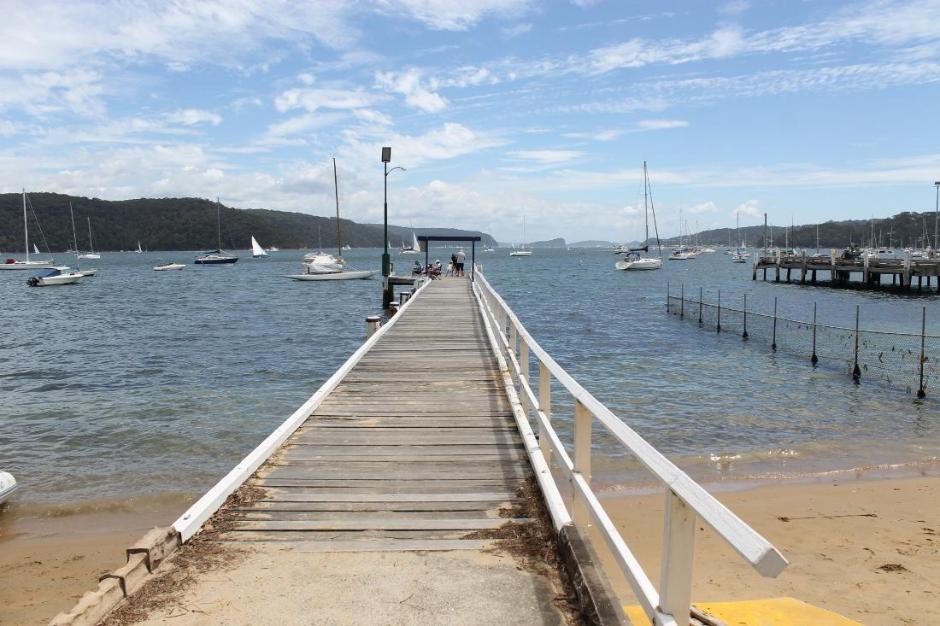
Taylors Point Wharf view north of Pittwater Estuary - A J Guesdon, picture